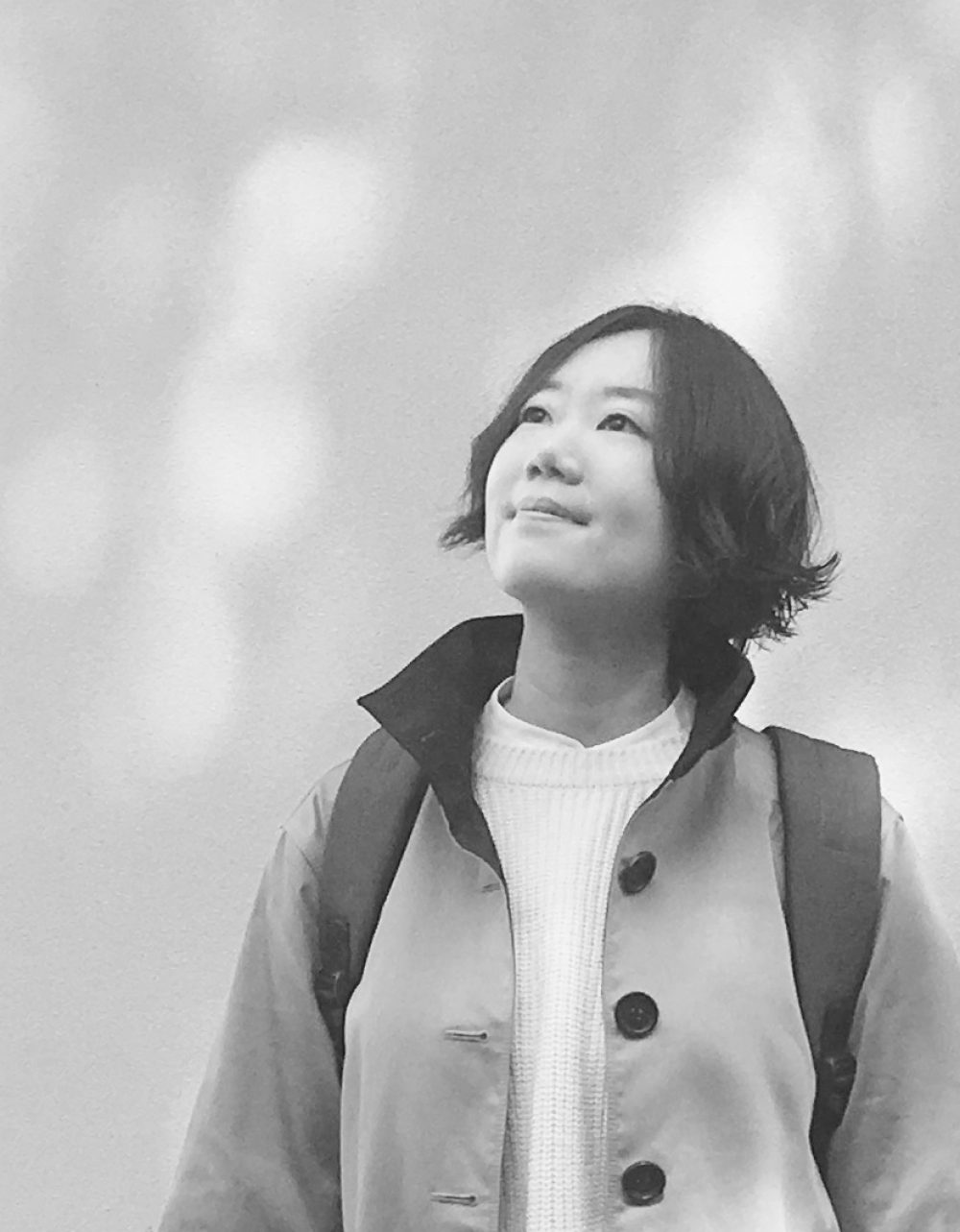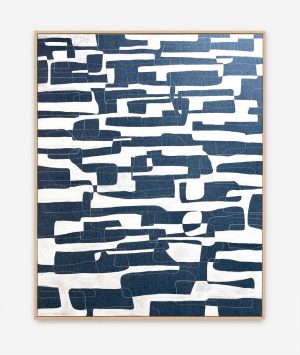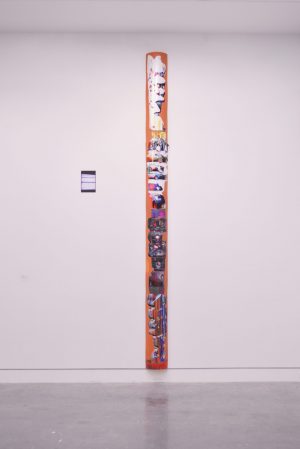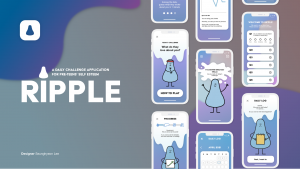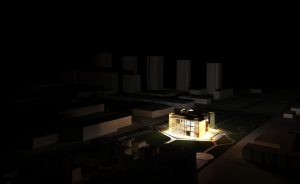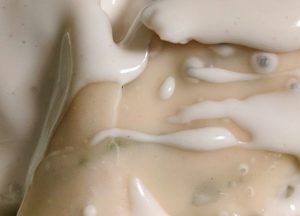Perspective is Moving: Tactics-Ways for Shifting Perspective in Design Practice for Ecology
Jihyun Park
Re-Thermometer
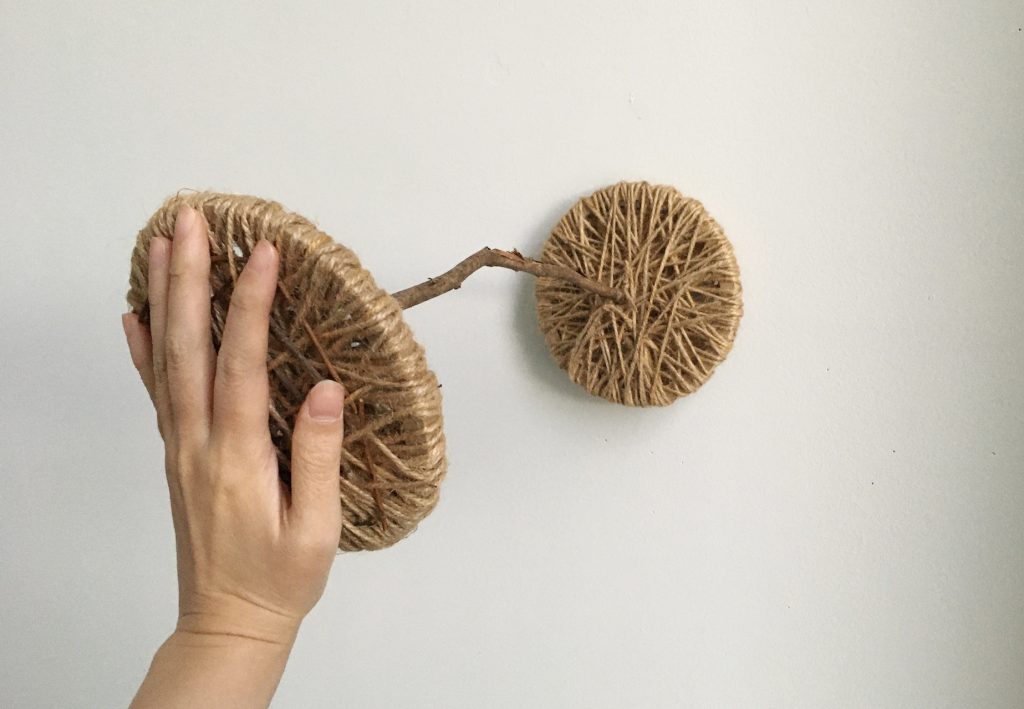
Re-Book
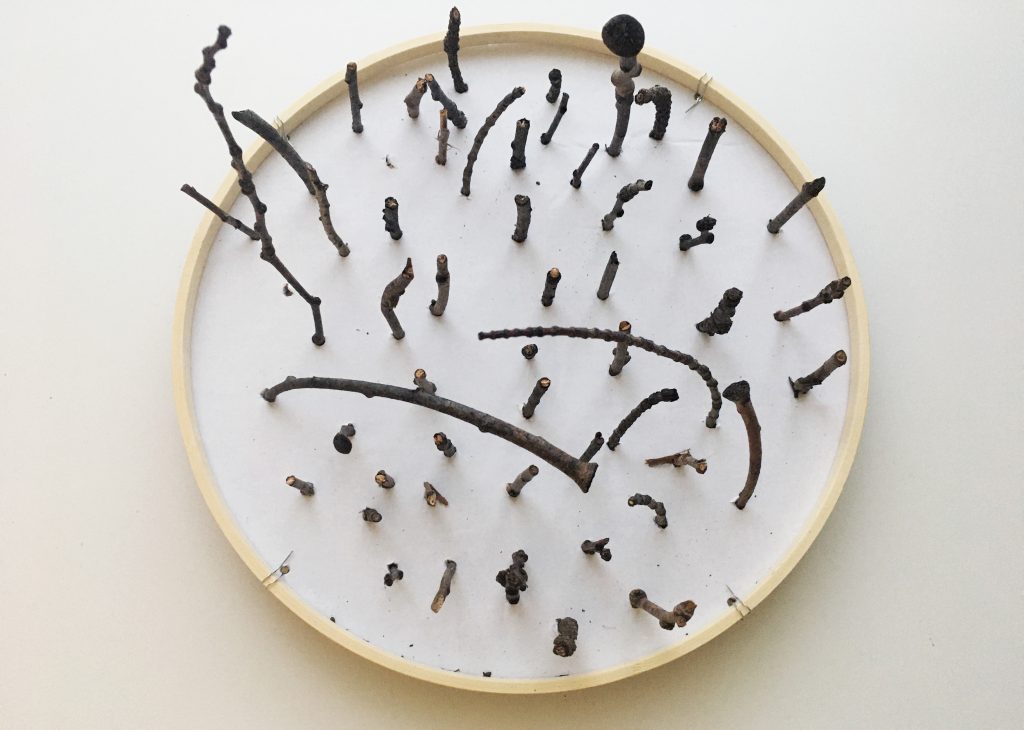
Re-Phone
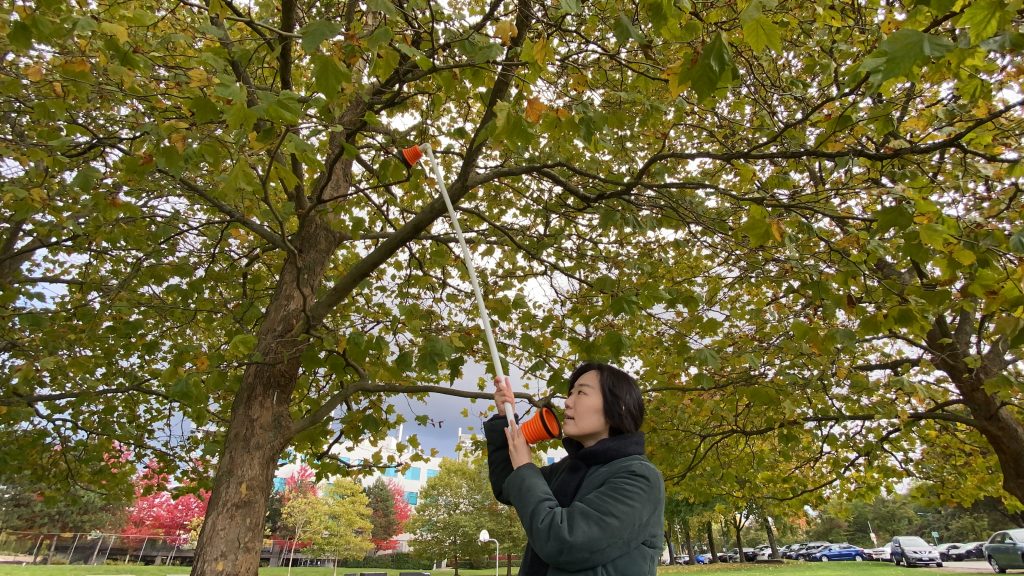
Re-Sketchpad
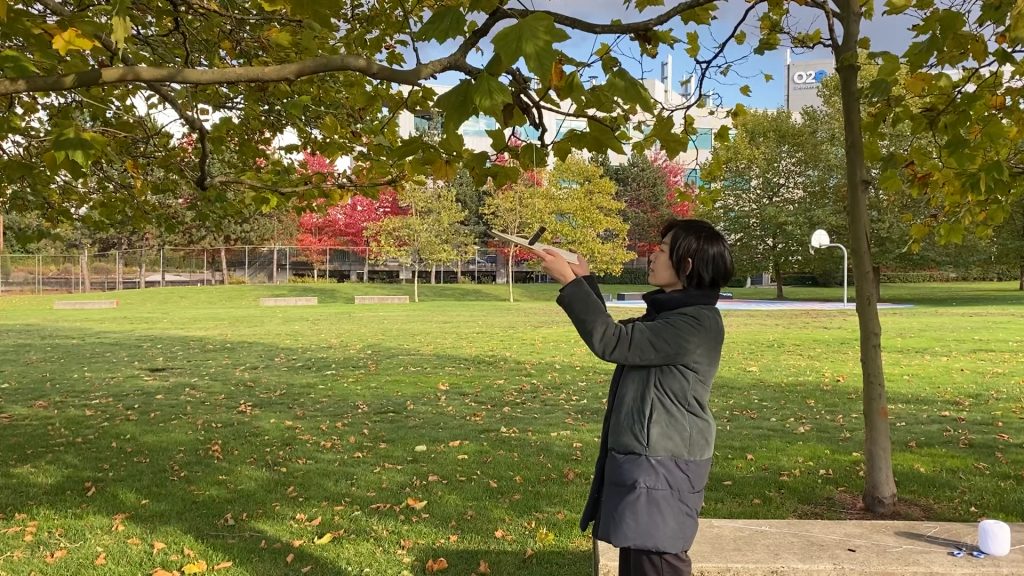
Re-Tape
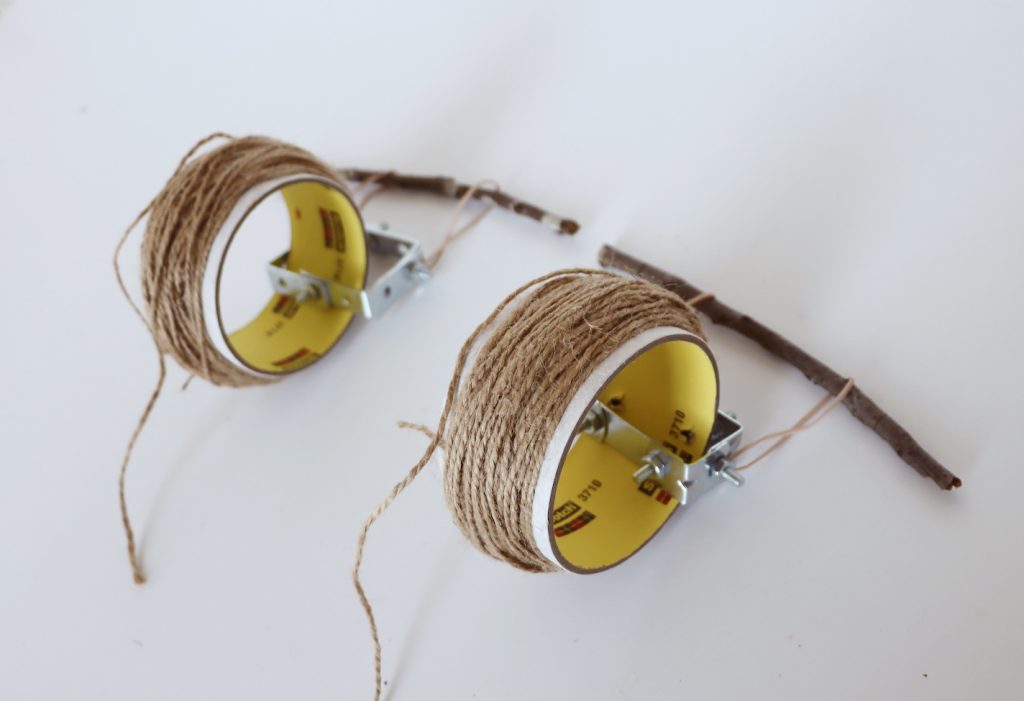
Re-Scissors
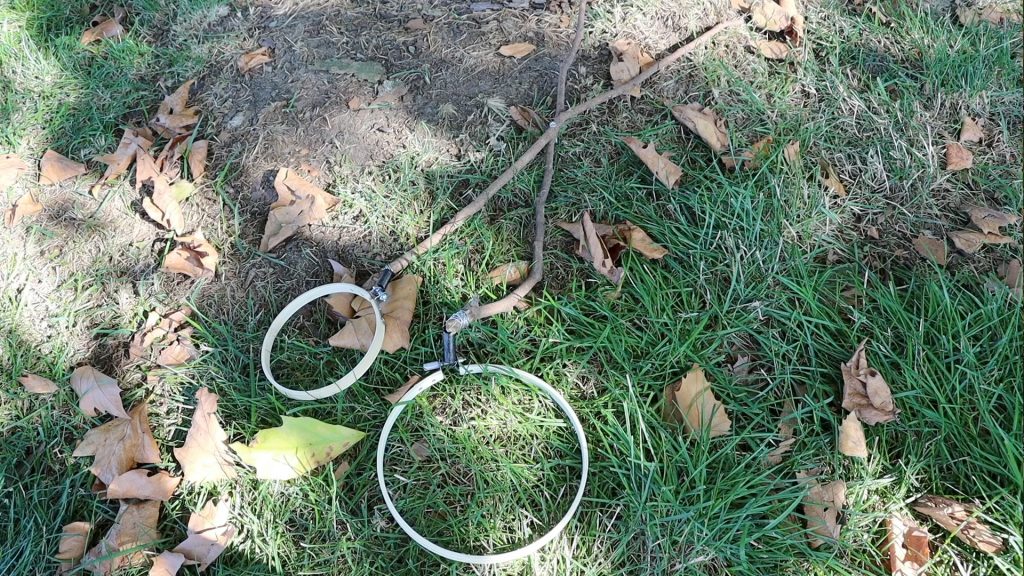
Re-Chair
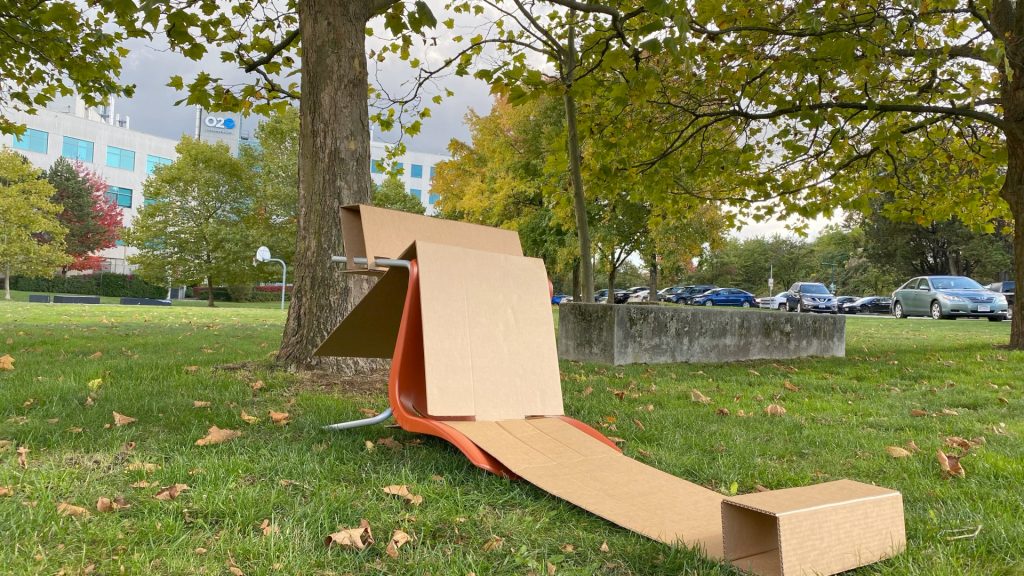
Abstract
My research Perspective is Moving started with two questions. An internal one – how do I see the world? And a professional facing one – how can a design or design process contribute to shifting contemporary dualist, human-centered perspectives derived from modernity to ones that are more relational, pluriversal, and ecological? My research is a personal journey, to ponder how it is that I have been tamed by modern society, to mark out how I have adapted to these constraints and to find alternative approaches to counter them.
As a way to shift my own perspective and assumption of the design process, I have applied epistemic artefacts found in modern world to my own process of cognitive recognition: Seeing-Refusing-Doing-Engaging-Embodying-Knowing-Becoming. Reflections at the end of each of these stages enabled me to identify my next steps. Generative, they became my way of finding a way forward. My early stages of research were developed through a cognitive design practice made up of actions for: Relating, Transposing, Merging, and Turning. In the second stage of my inquiry I embraced an empirical design practice made of actions that were: Engaging and Embodying. Outcomes from the early stages of my research trajectory show how flexibility and connectivity of my perspective and relationships can affect the process of designing artefacts. The second stage of my work demonstrates how I sought out ways to negotiate and communicate with nature. A specific tree, located in the public park of Vancouver plays an important role in this stage of my work – a way of connecting with nature.
My work, detailed in this thesis document, provides other designers provocative tactics to think about how we live and be with nature and concurrently contribute through our work as designers. It is also an invitation to designers with limited first hand experiences in nature or ecological thinking: observe how my perspective has changed by trying the approaches and methods that I took on.
My Research Journey [Video]
My Research Journey [Visual Storytelling]
01. Seeing
Hello. My name is Jihyun Park and my research title is “Perspective is moving, Tactics – Ways for Shifting Perspectives in Design Practice for Ecology. A little about myself, I came from Seoul, South Korea two years ago. In Seoul, I was a designer just working for the industry. But after I came here and through my master’s research, my perspective has shifted a lot.
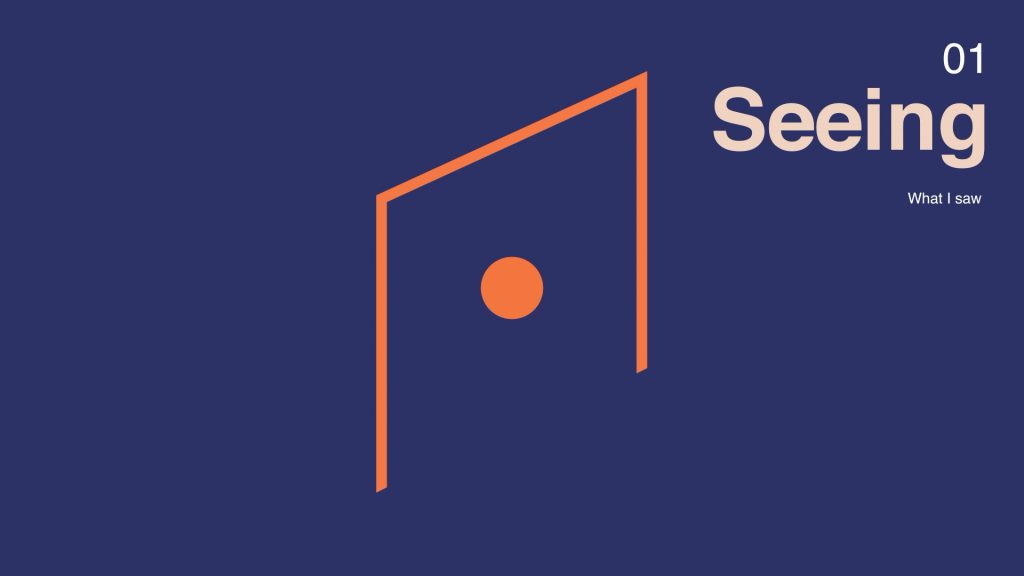
Let’s see how my perspective has shifted. The orange circle was my perspective. Before my research, it was trying to move… but it was stuck in the square frame. Why couldn’t it move? Let’s follow one of my stories that I had a few years ago when I lived in the city of Seoul.

I stayed in a very common apartment in Seoul. I still remember what I said when I looked at it the first time. “Ah! This is what I have dreamed of! It is clean, new and very modern!” However, my modern home, which was perfect, had one flaw. Every morning I had to wake up to the sound of the construction from the next building. The construction spread like a domino. It looked like an obvious action of erasing all the old and being filled with modern buildings. There was a small banner hanging in the giant tree I used to pass. “Please do not cut this tree! This tree is the guardian that has been protecting our region for more than hundreds of years. However, after a while, the body of this tree was cut off.
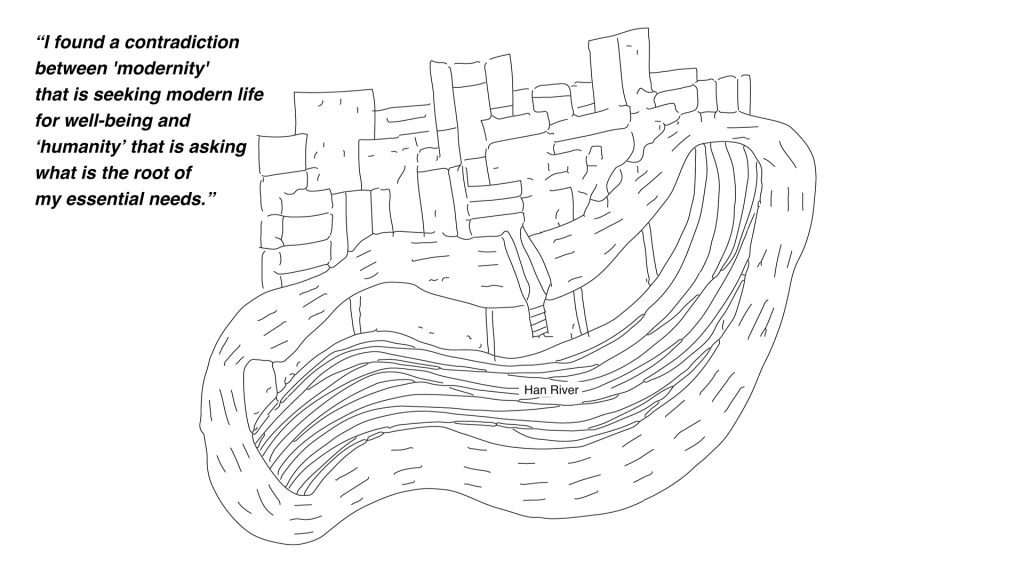
There was a river near my home. To escape from the noise, I tried to get to the River. But I had to suffer again from the sound of cars on the 8 lane road around the River. At that moment, I found a contradiction between ‘modernity’ that is seeking modern life for well-being and ‘humanity’ that is asking what is the root of my essential needs. Why does this happen?
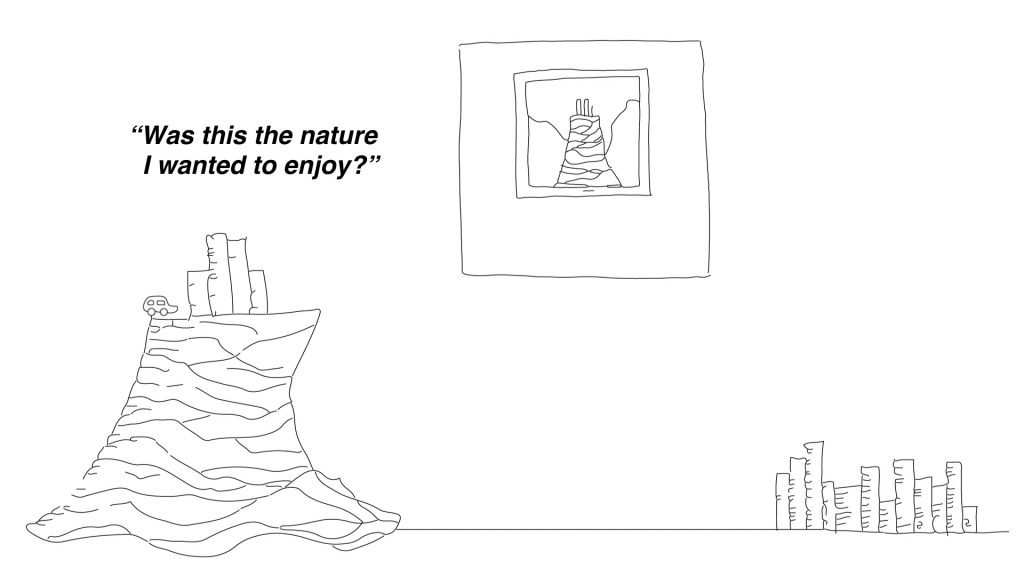
Weeks later, my partner and I decided to travel a little further away from the noise, somewhere in nature. However, the hotel we arrived at was built on the naked and empty mountain. Through the window frame I only could see other similar hotels on the bare slope. Was this the nature I wanted to enjoy?
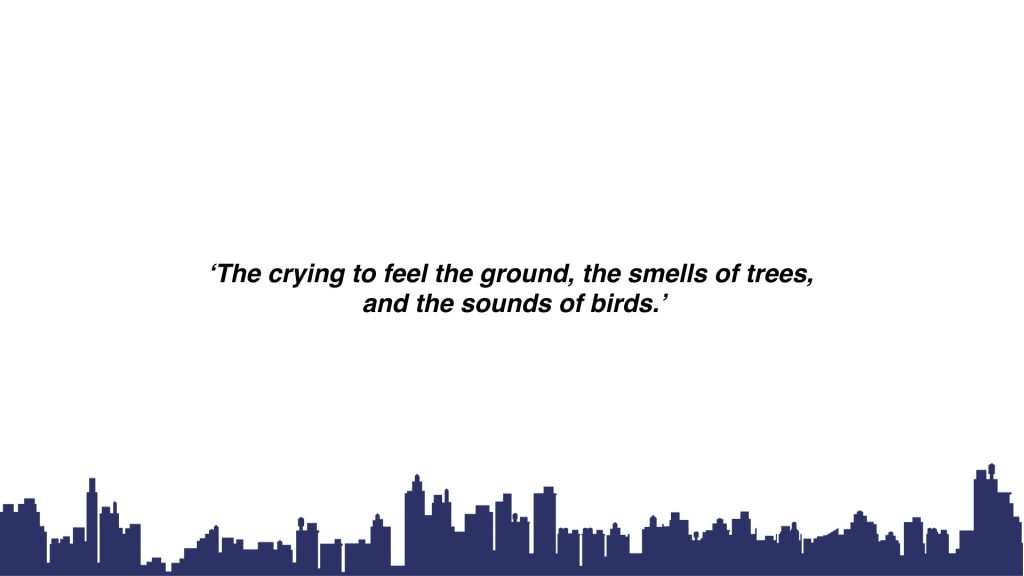
While I was watching the naked mountain in the modern hotel, I could almost hear the little sound of crying coming from deep inside me. The crying to feel the ground, the smells of trees, and the sounds of birds.
02. Refusing

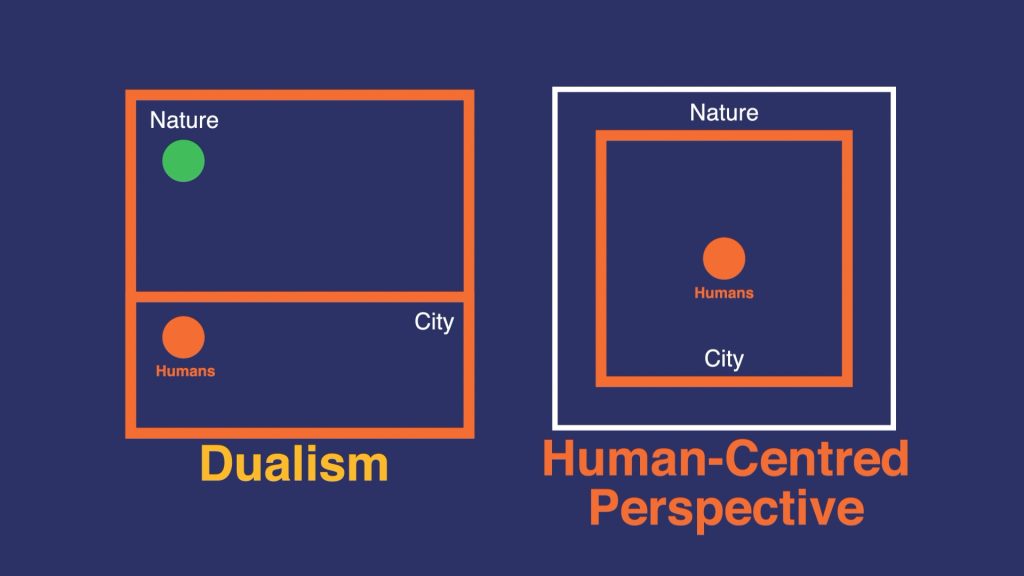
This story made me realized that the separation between city and nature is in the background of my perspective that couldn’t move. And I realized that ‘Dualism’, which puts nature in the non-human category and thinks humans and nature separately, and ‘Human-centred perspective’ that puts humans at the centre made my perspective closed-linear.
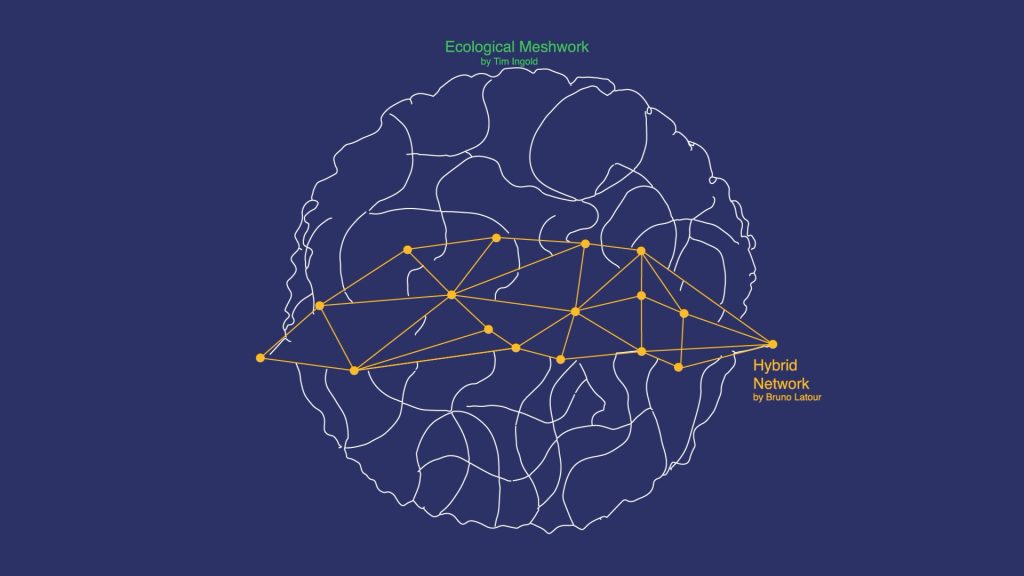
I sought alternative approaches by comparing Hybrid Network that refers to Bruno Latour’s theory and Ecological Meshwork that refers to Tim Ingold’s theory. Through this process, I have learned that humans have created a complicated Hybrid Network that doesn’t assimilate with Ecological Meshwork.
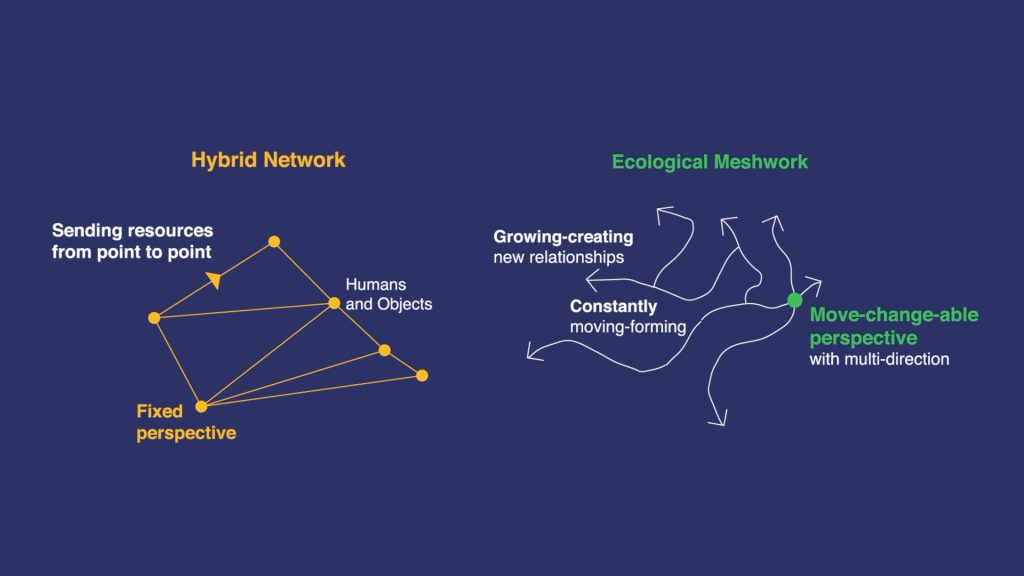
In the Hybrid Network, humans, objects, and entities send resources from point to point within fixed perspective. However, in Ecological Meshwork, everything works on a moving path, constantly moving and forming, growing-creating new relationships through the multi-direction.

I found that if my perspective works like this Meshwork I can break my closed-linear perspective and make it move-change-able. Also, In this way, I would find links between Ecological Meshwork and Hybrid Network.

To seek ways of this, I looked at myself and my perspective. Why I was ‘crying to feel the ground, the smells of trees, and the sounds of birds.?’
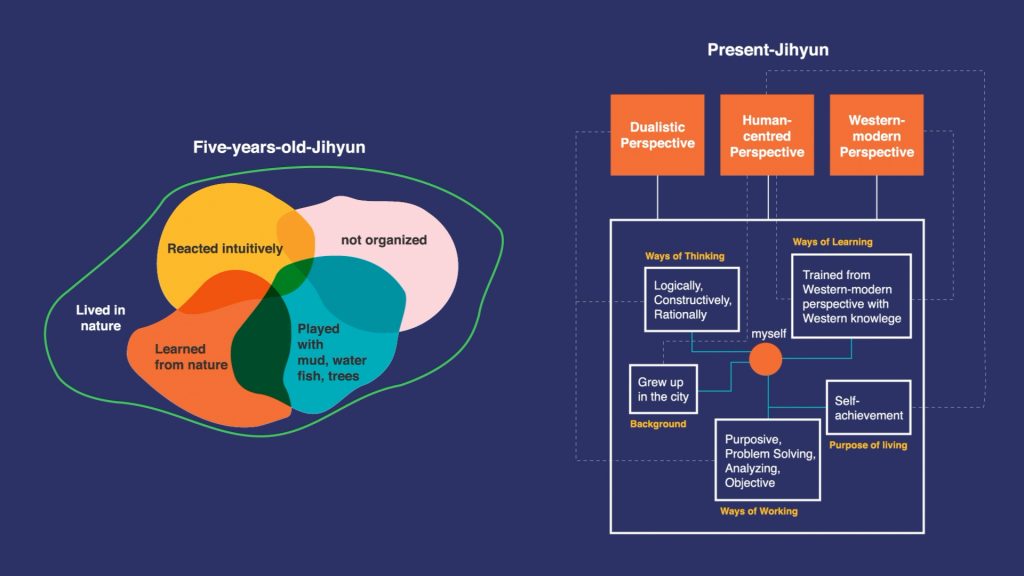
I recalled my memories when I was five years old. At that time, I wasn’t that organized. I preferred playing with mud, water, and reacting to the moving fish rather than building structures or forms. I reacted intuitively. I learned from nature. However, when I was five, my family moved to the city, I went to school. As I grew up, I became accustomed to working within a logical and structured system. Most of learning methods came from Western knowledge although I am an Asian. This educational system and the urban environment that I grew up in /was sufficient to install in me /a dualistic and a human-centred perspective of the world.
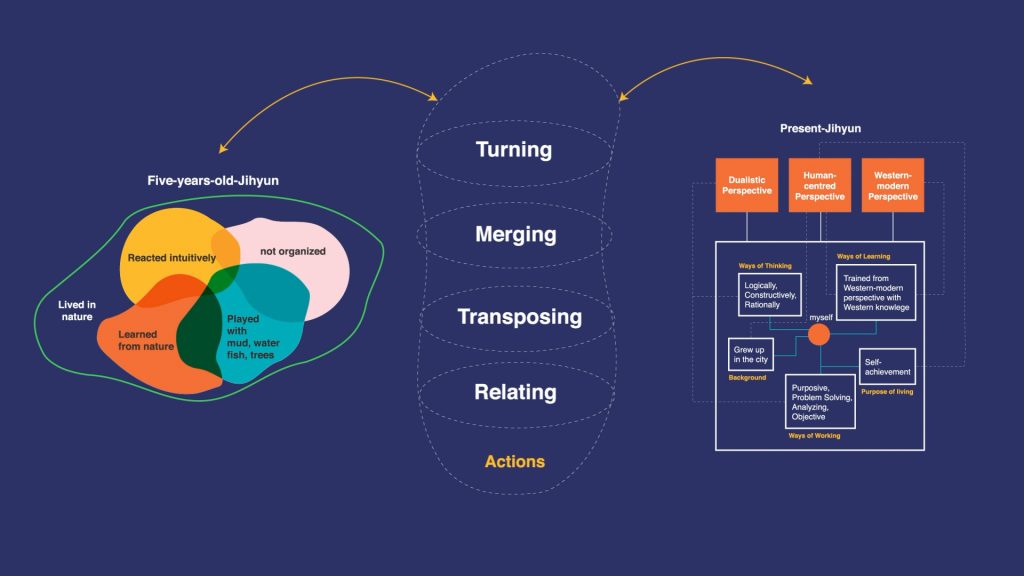
In order to refuse these perspectives, I wanted to get closer to Five-year-old-Jihyun. I came up with four actions that would change my perspective to the move-change-able. They were Action: Relating, Transposing, Merging, and Turning. Wouldn’t I be able to get closer to five year old Jihyun If I practice these actions?
03. Doing
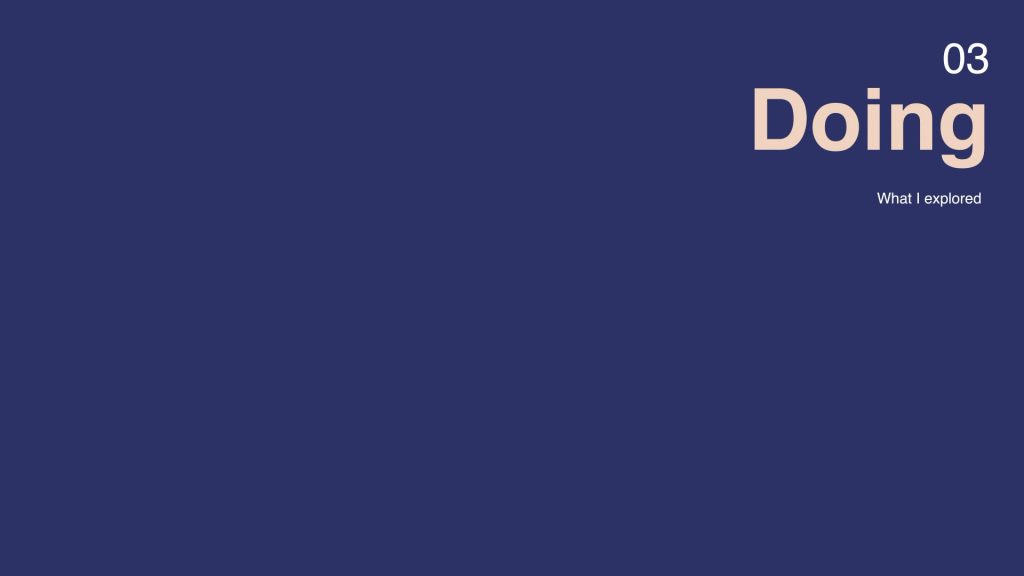
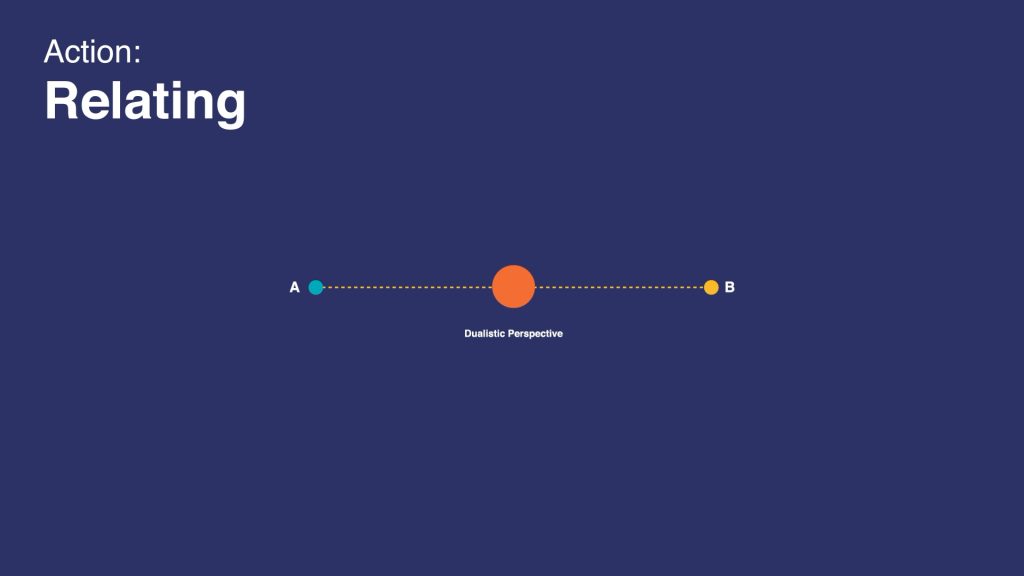
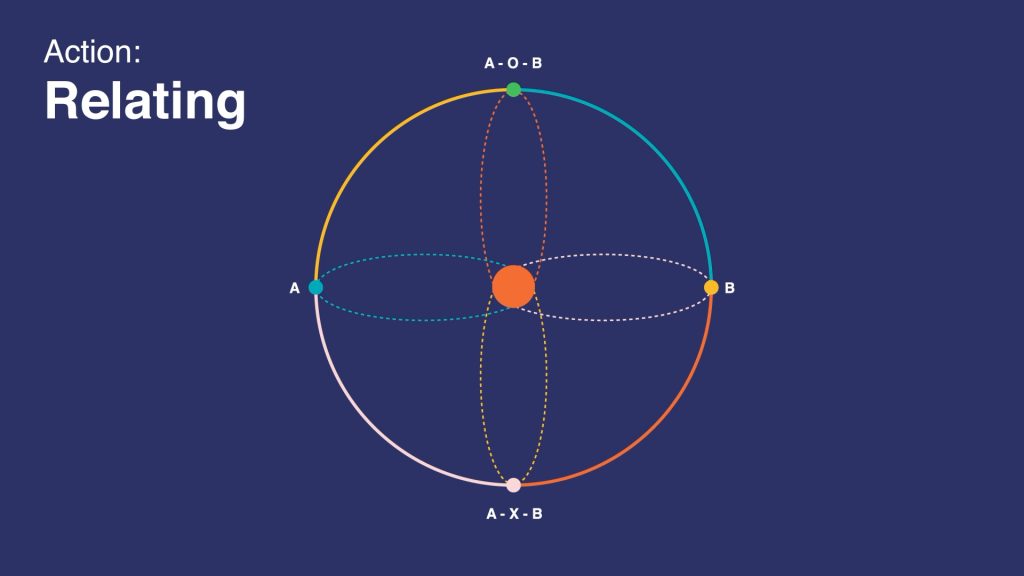
Action: Relating
From Dualistic to Relational Beyond my Mug

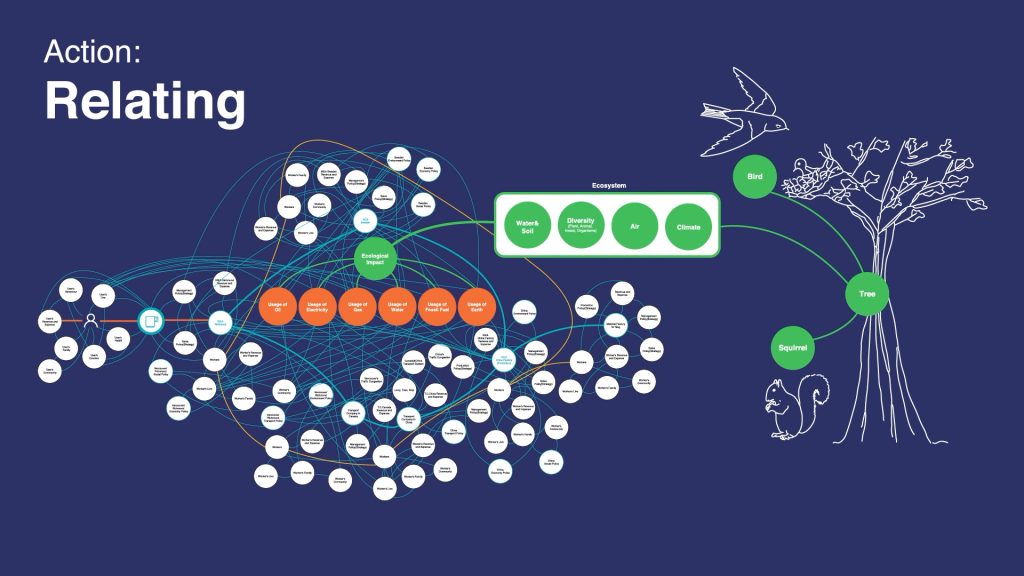
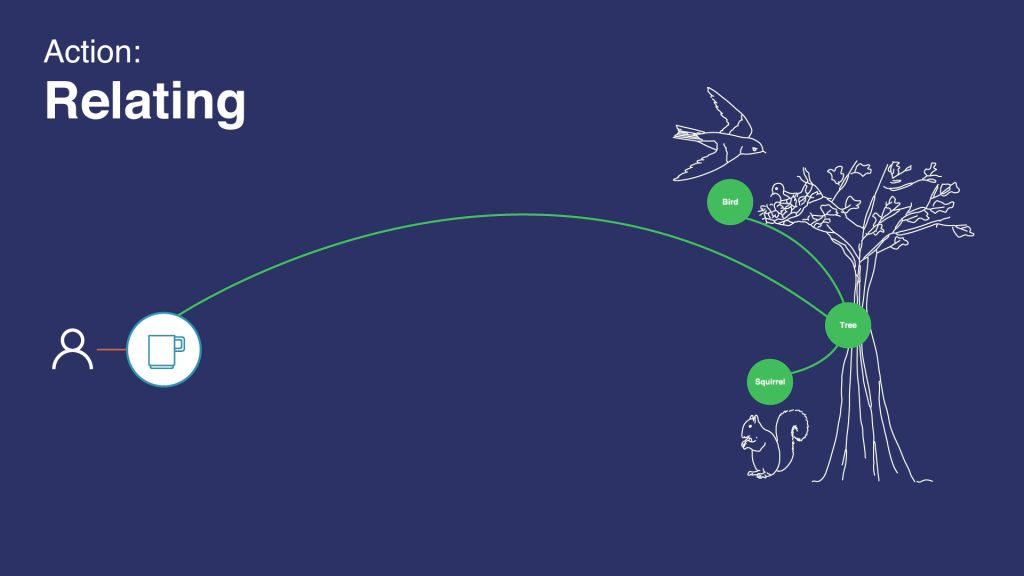
Through action Relating, I realized that beyond this mug many things were interconnected and linked to the ecosystem include materials, trees and animals. This made me conscious every time I used objects, of how I use them and how these inherently affect the more than human entities that I share my space with.
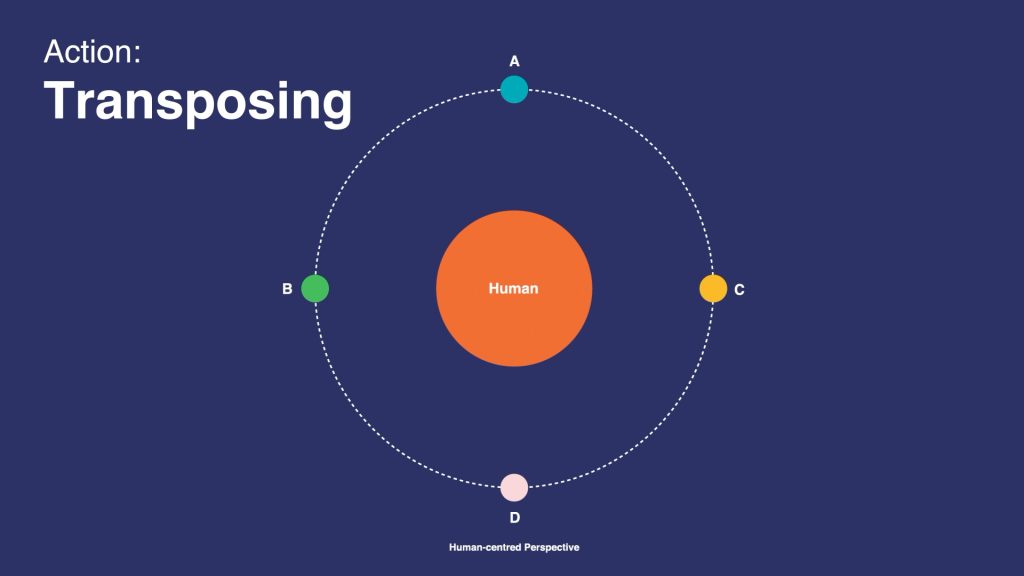
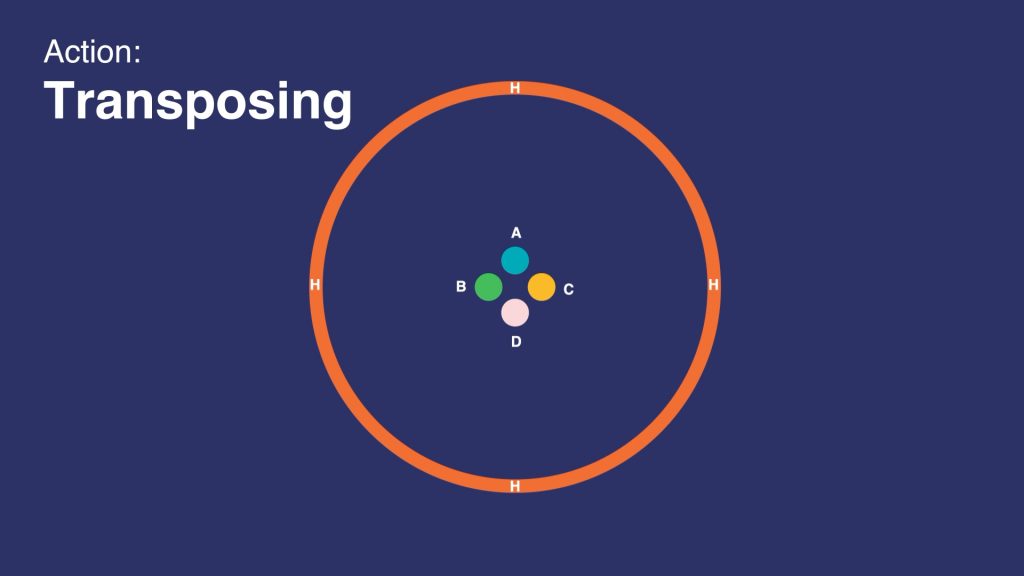
Action: Transposing
Putting humans outside and speculating
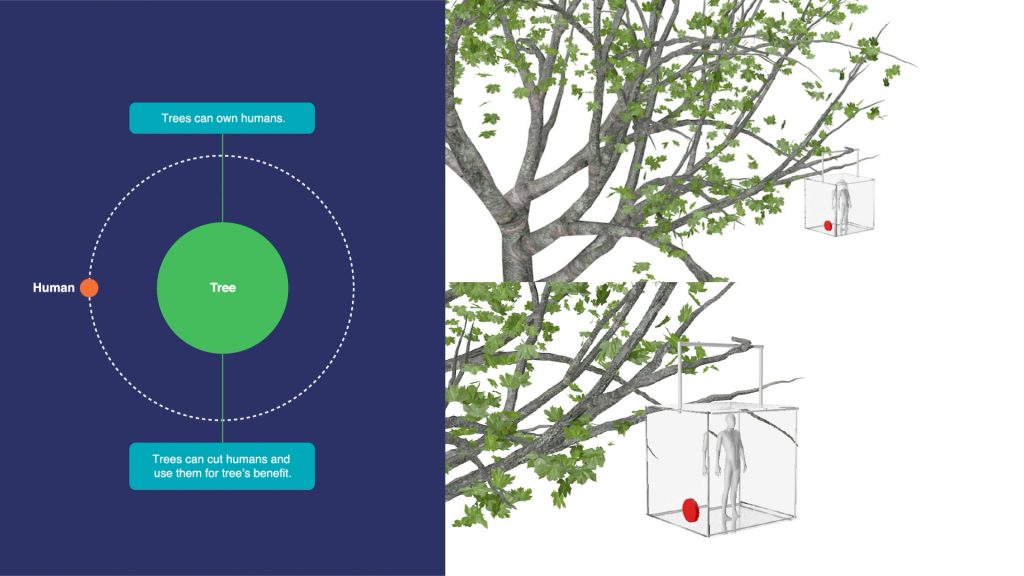
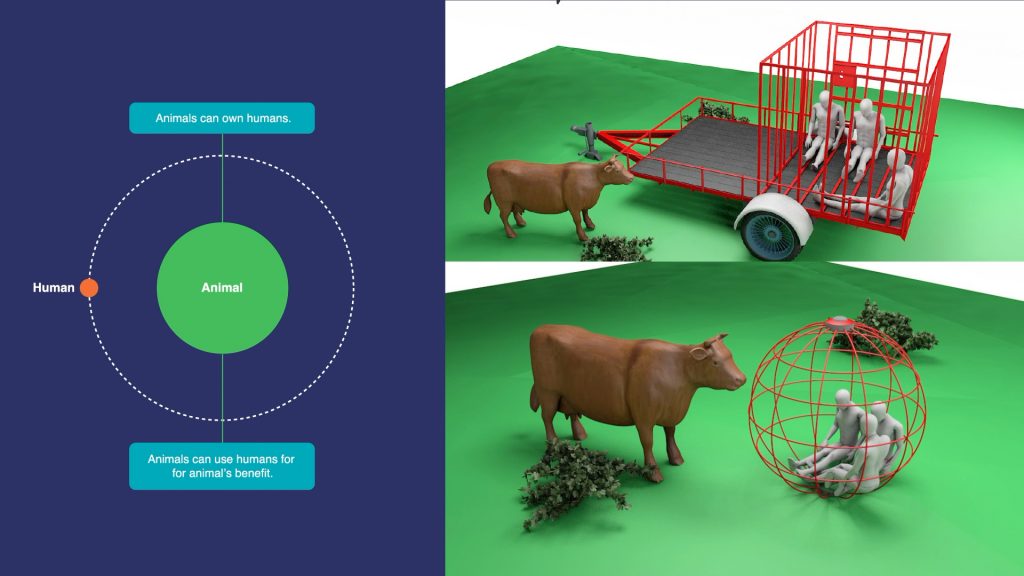
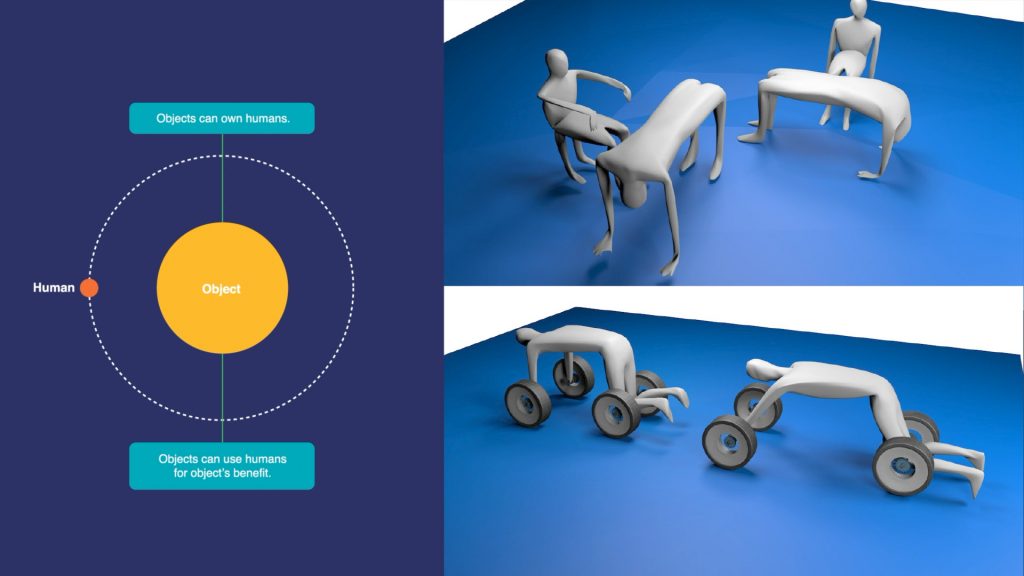
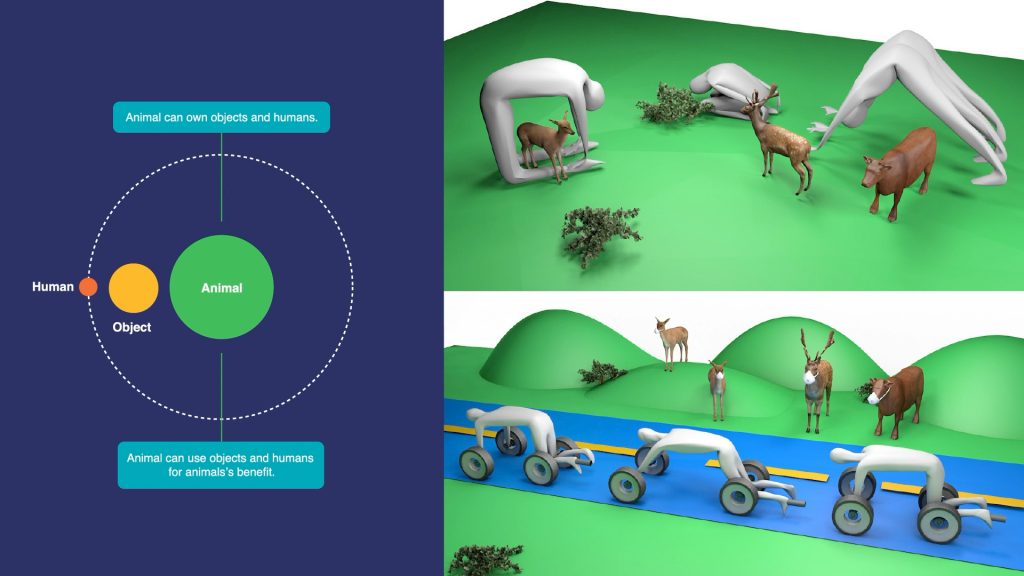
Action Transposing trained me to align my perspective to the perspective of the thing: tree, animal, and object. It also enabled me to shift and avoid seeing nature from an exclusively human-centred perspective.

Action: Merging
Merging perspectives from western, non-western humans, forest and objects
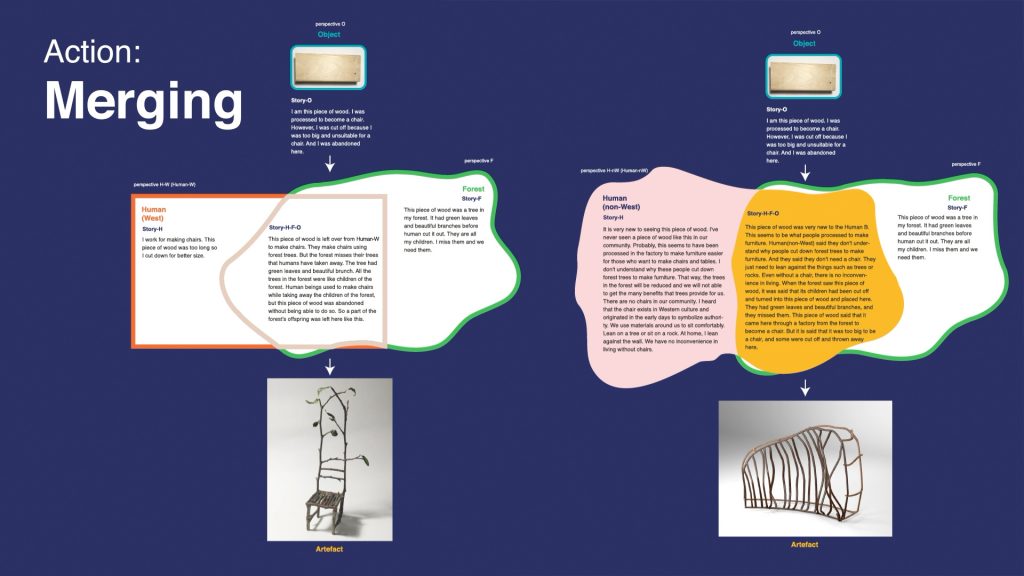
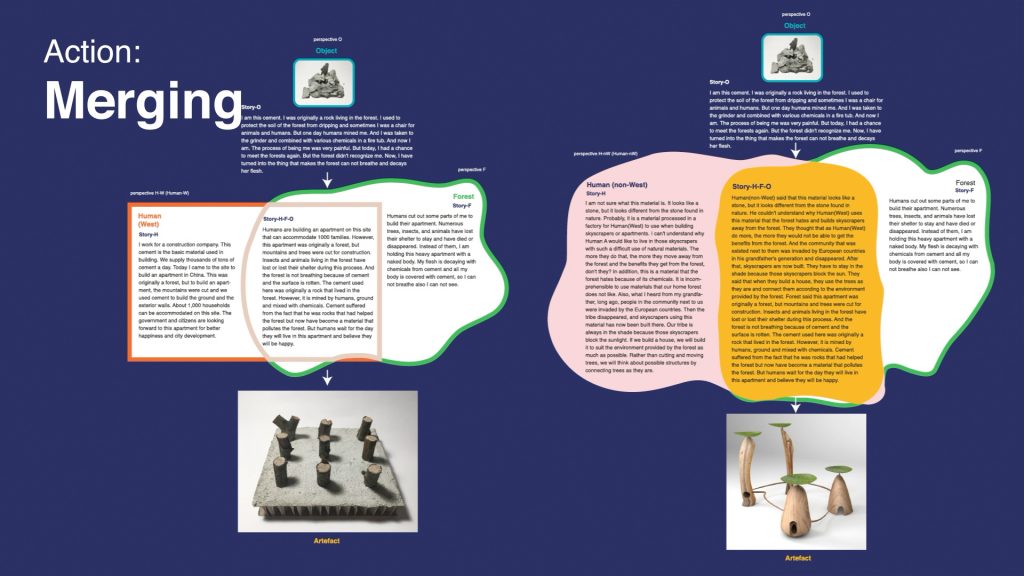
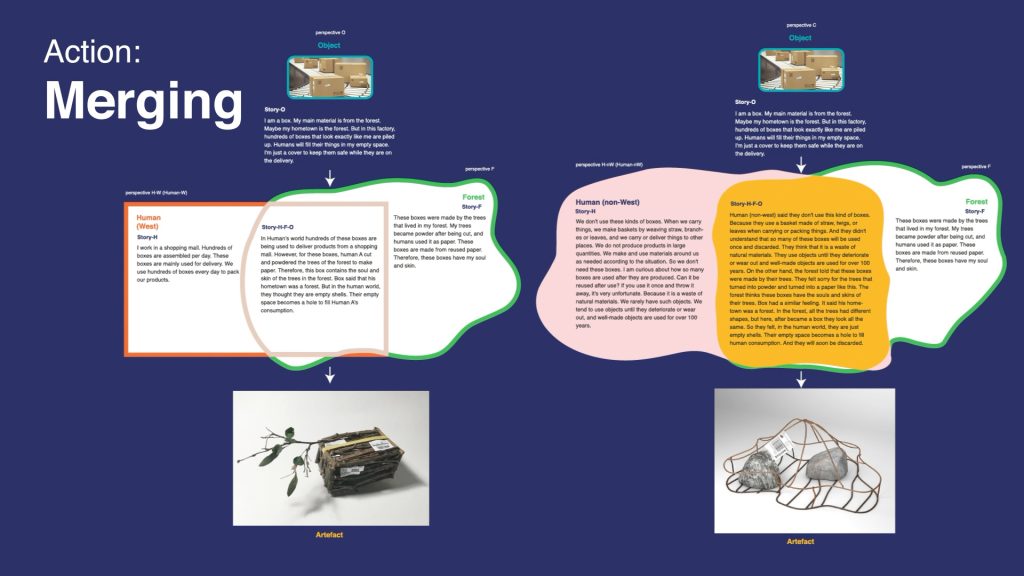
This merging action trained me to think from a merged perspective and to consider how different perspectives can affect each other and lead us to different conclusions through various directions.
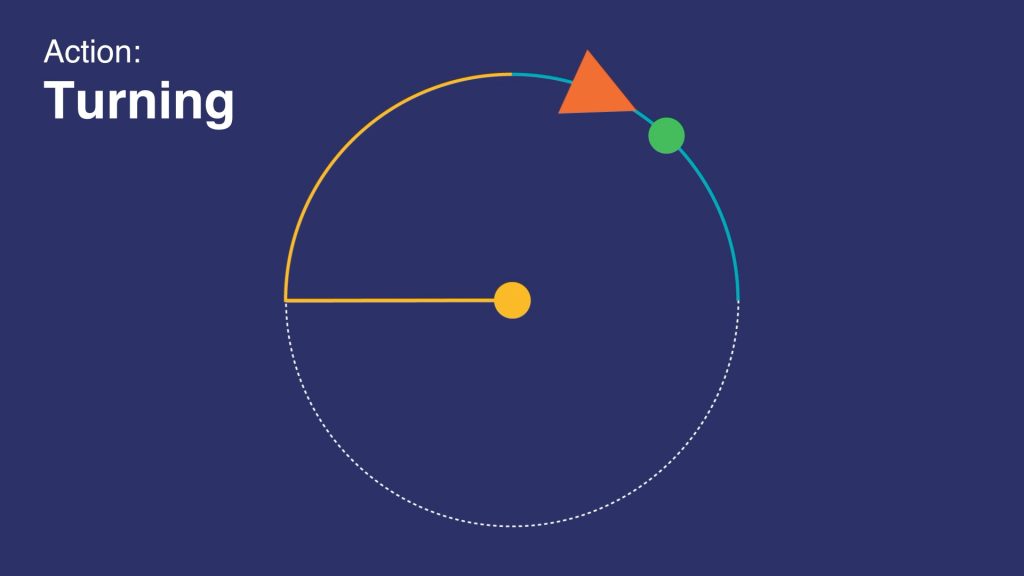
Action: Turning
Turning my head toward spaces and objects around me
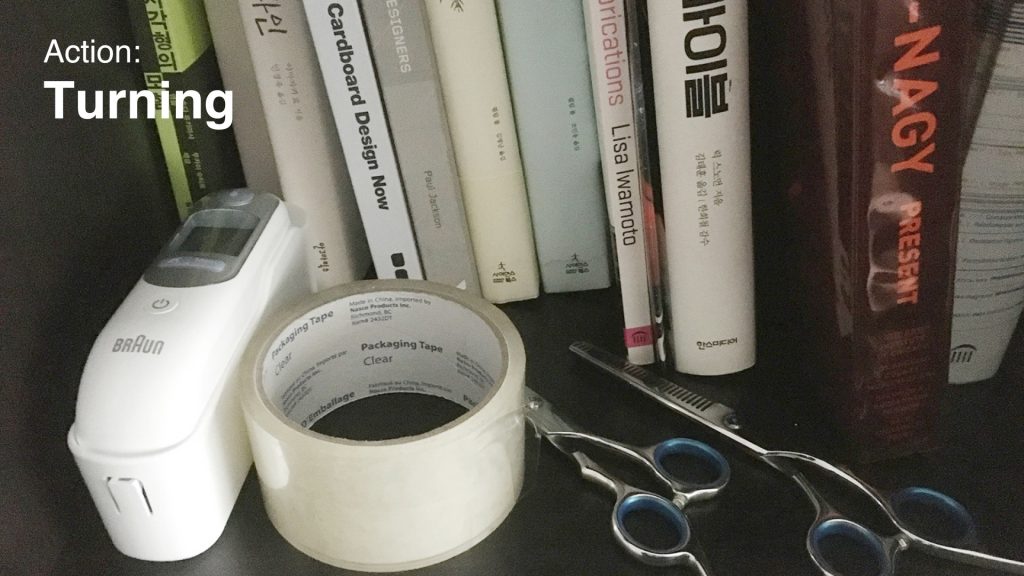

Through action Turning, I realized that objects can influence each other. Especially, this led me to look at objects that were engaged in my daily life and how they were related to nature.

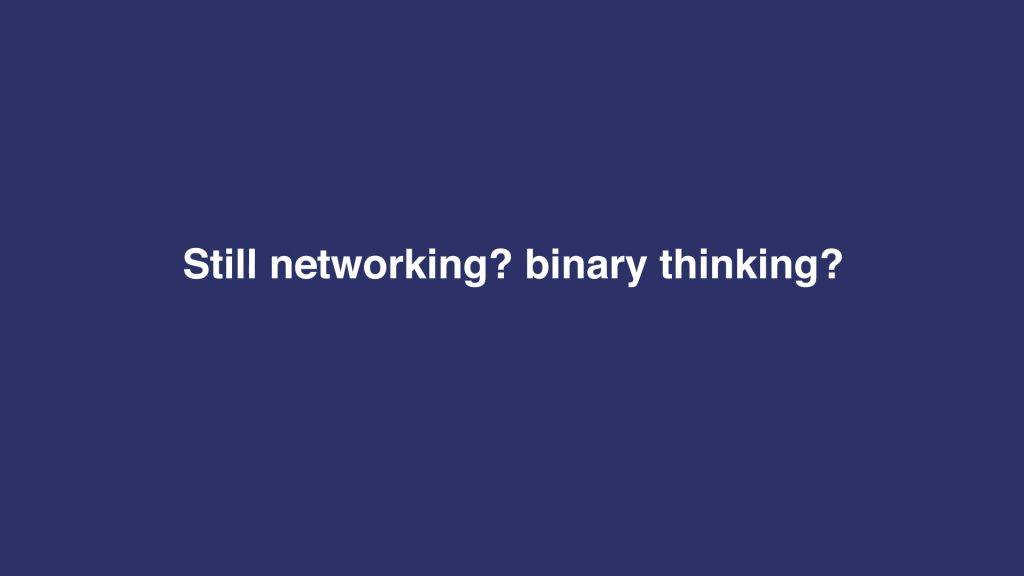
Although these actions played a role in opening up my closed-linear perspective to move around nature cognitively, I realized I still often used a way of networking and binary thinking. I felt something was missing to get closer to the Meshwork and have a move-change-able perspective.
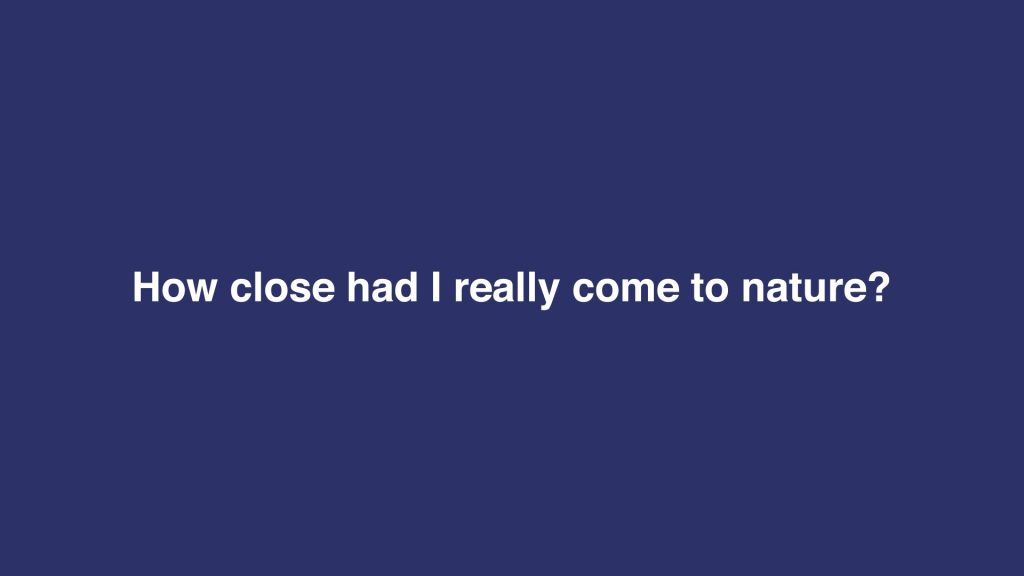
It led me to this question, “How close had I really come to nature?”
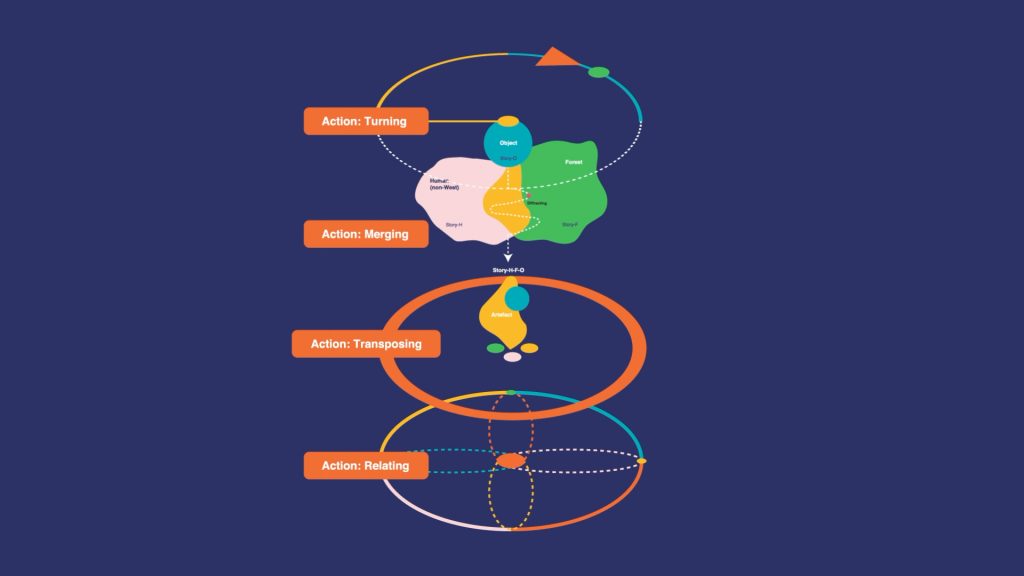
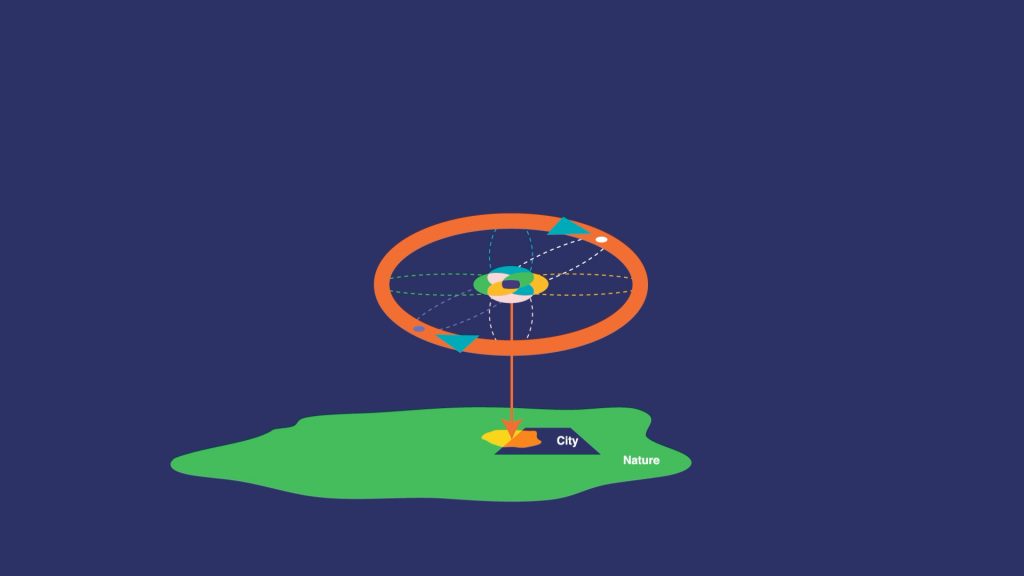
I integrated my actions into one. As a way to explore this question, I referred to the ‘particularity of relations in place’ that I was inspired by Indigenous Knowledge. I called this action Engaging.
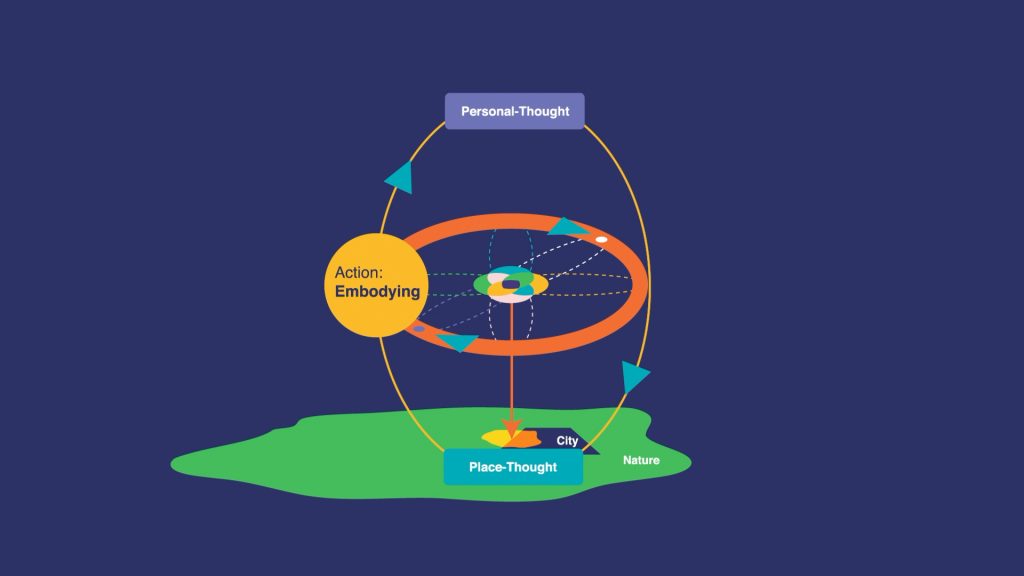
As a way of exploring the particular place and link my personal-thought to place-though, I came up with action Embodying.
04. Engaging
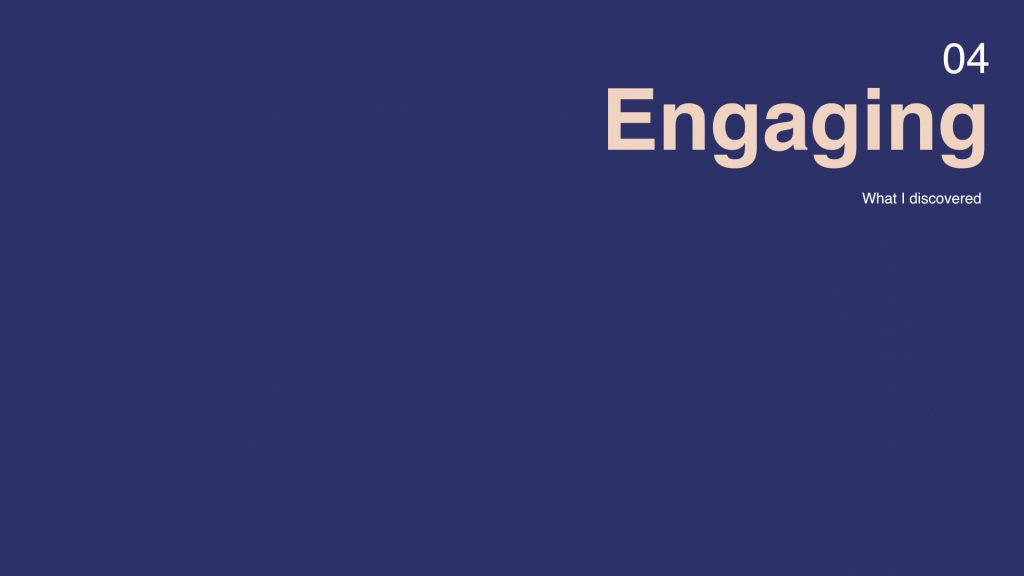


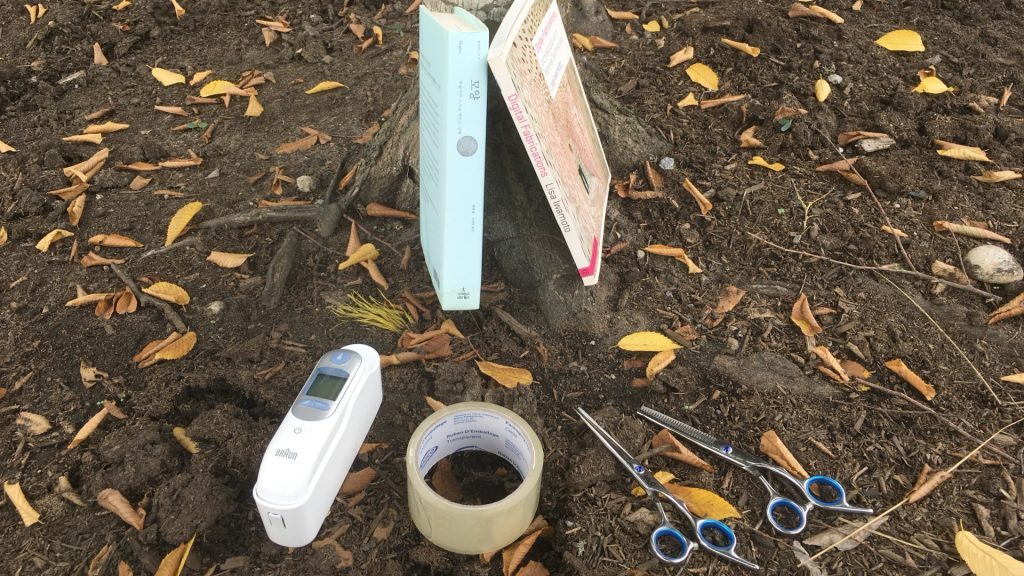
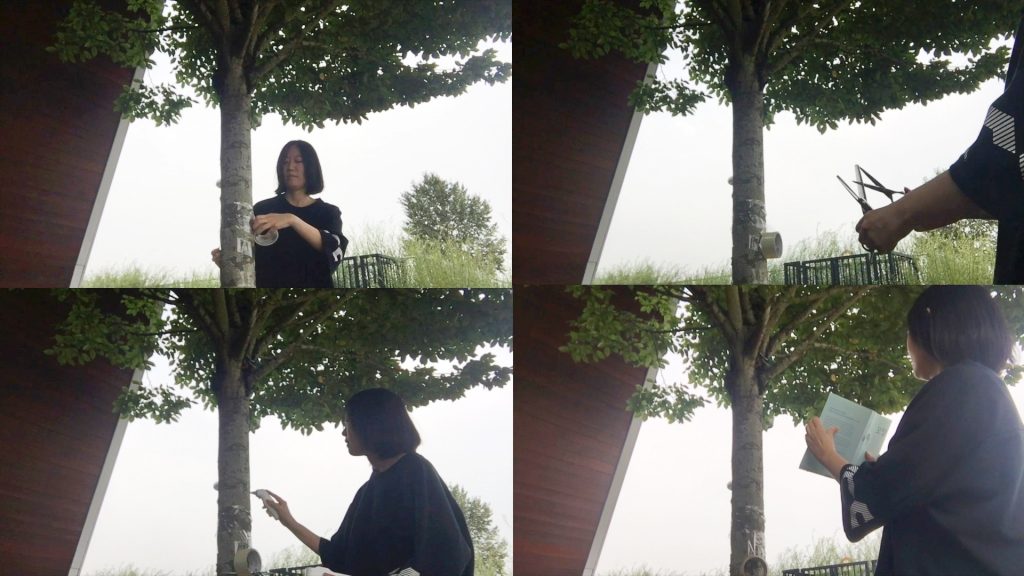
So, where and what can I be engaged? I thought that the representative of nature in the city could be trees. I went to the tree that lives near my school and I tried to engage with my modern objects – Tape, Scissors, Thermometer, and books. Through these actions, I felt a long distance between the tree, myself, and my objects.
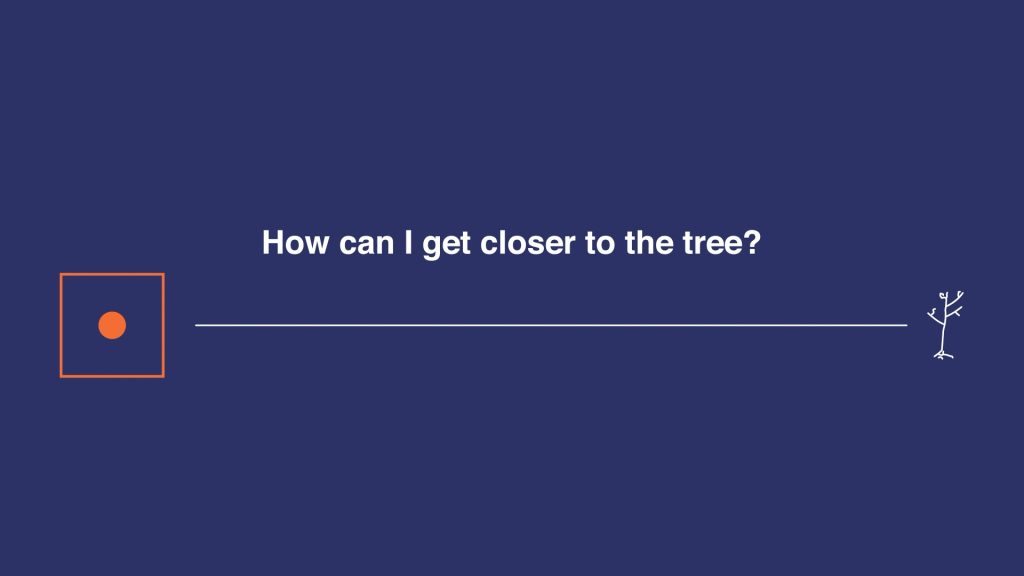
How can I get closer to the tree?
05. Embodying

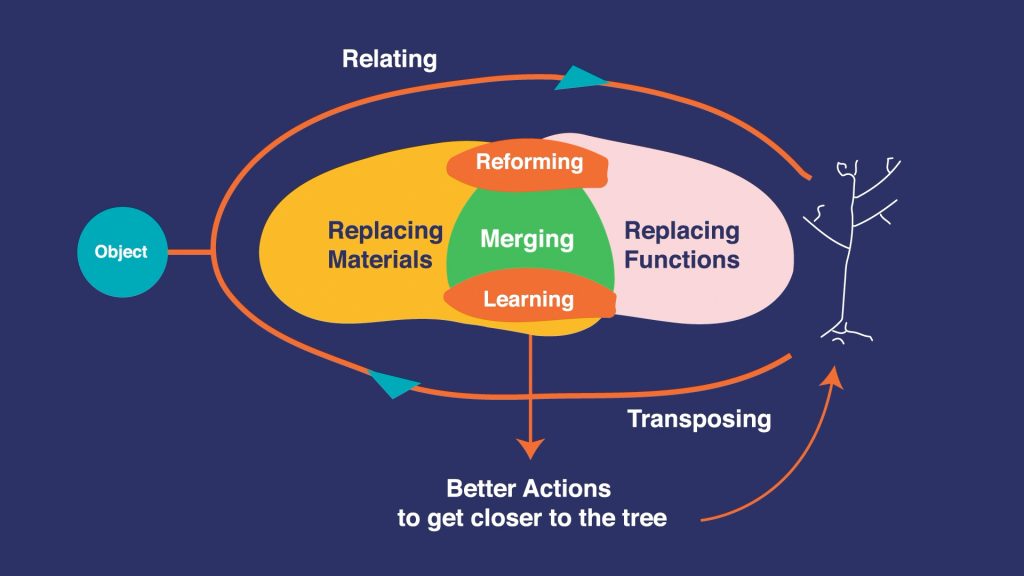
To seek ways to get closer to the tree, I decided to reform my objects. As I learned from Action Relating, transposing, and merging, I tried to relate to the tree by replacing materials or functions of each object to trigger better actions toward the tree.
Re-Tape
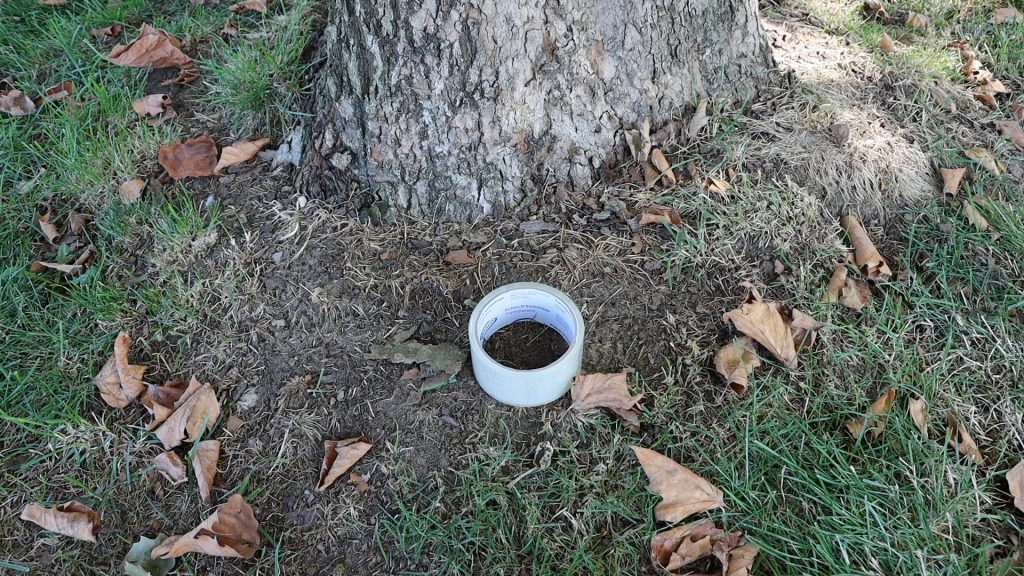
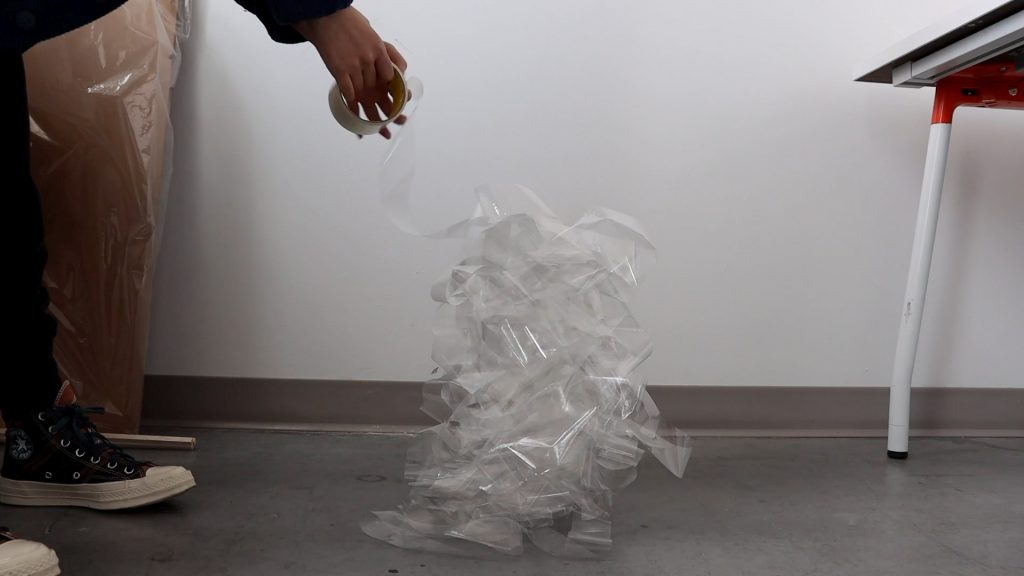


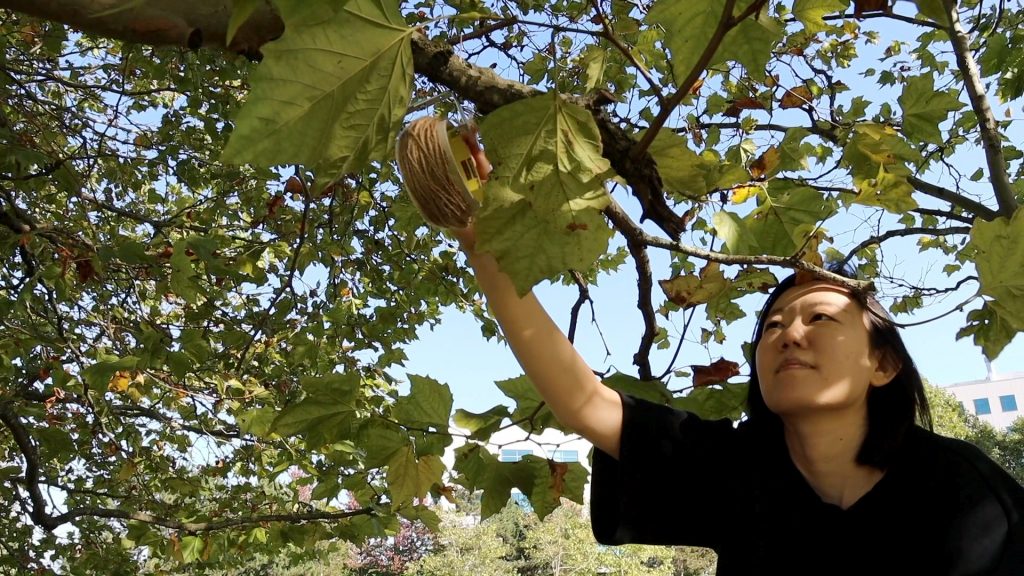
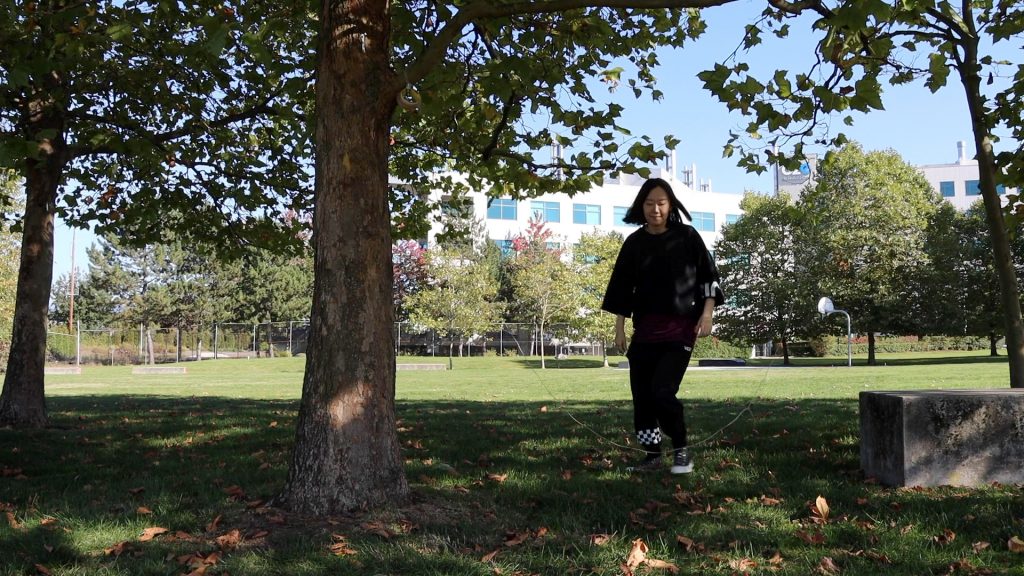
Re-Scissors
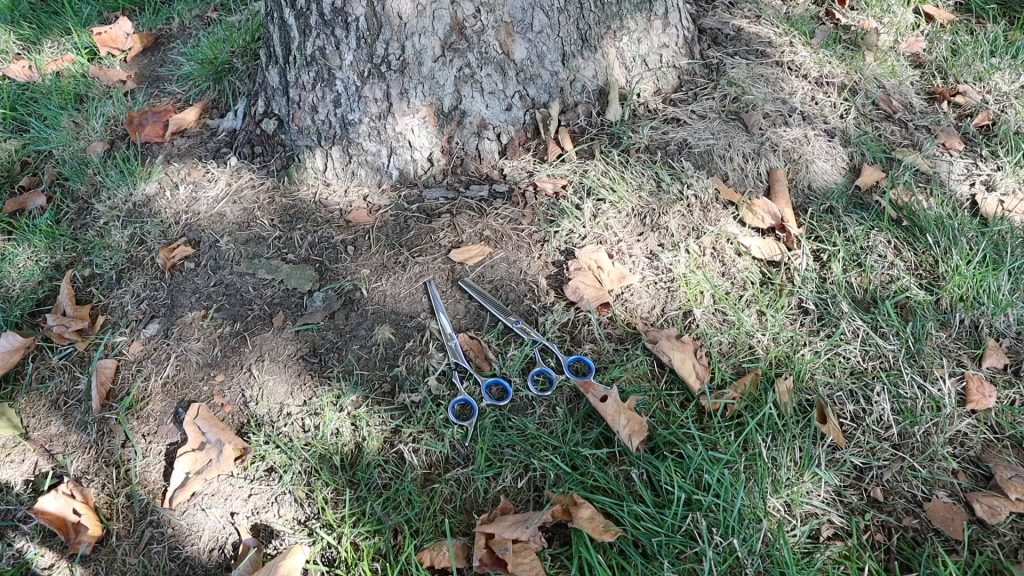
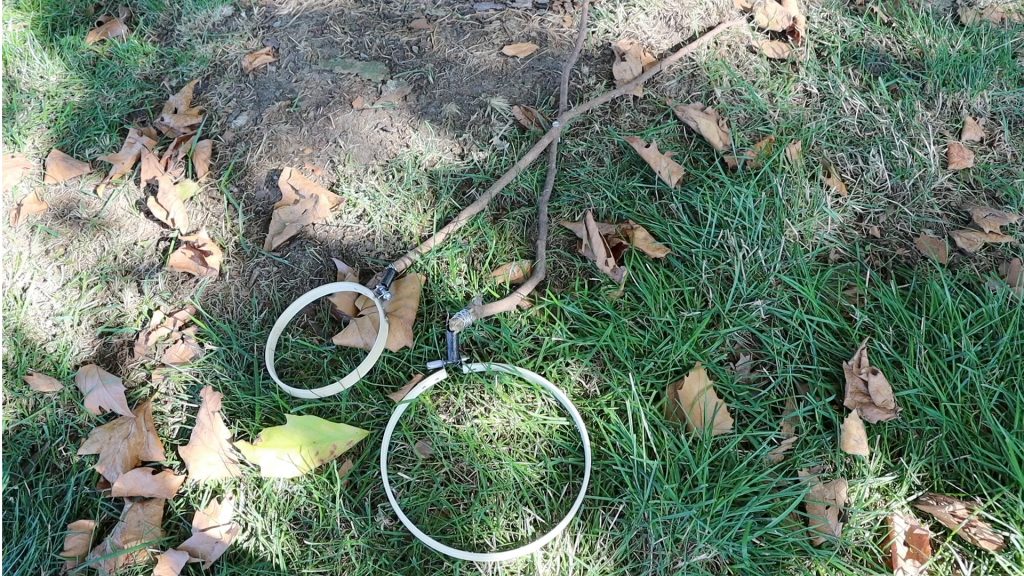
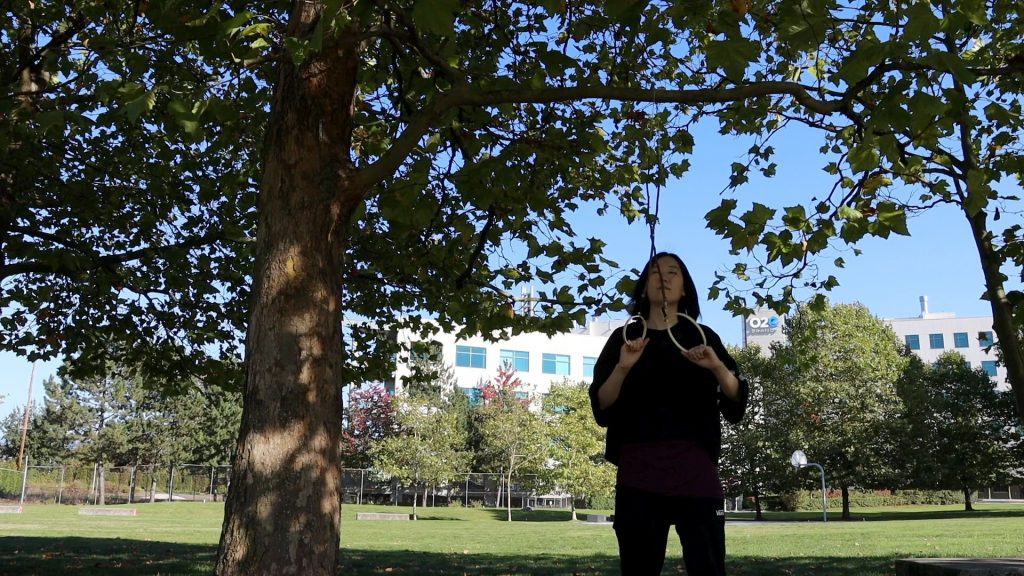
For the tape and scissors, I changed the material and functions to play with the tree. These reformed objects triggered actions to play with the tree for the first time since I was five years old. I was happy in the end, I felt like I had become a friend with the tree.
Re-Chair
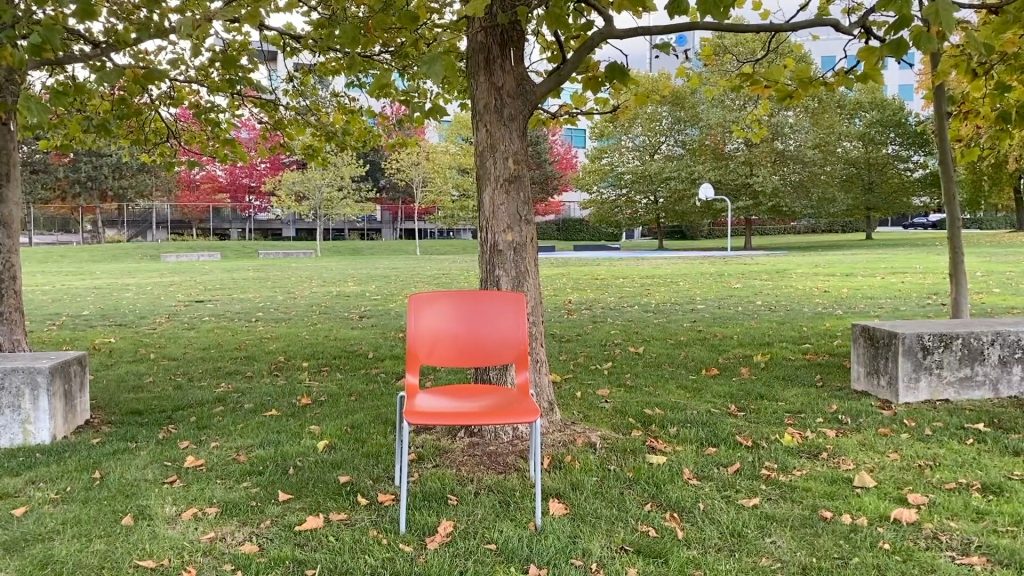
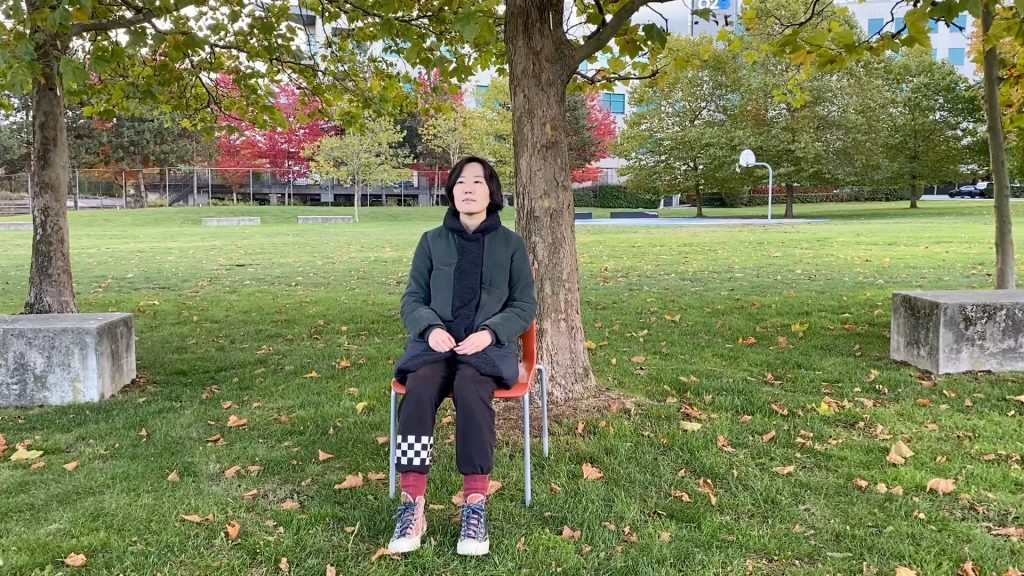
One day I was in the studio and looking out the window. While I was looking out, I wondered what the tree would be looking at.

I was sorry that the tree had been seeing such a bad landscape every day. Humans have always wanted to build a house in a place with a good view, but has anyone who planted this tree here ever thought about what landscape that this tree would look at? This made me think that we need to look at trees as the same living beings as humans.
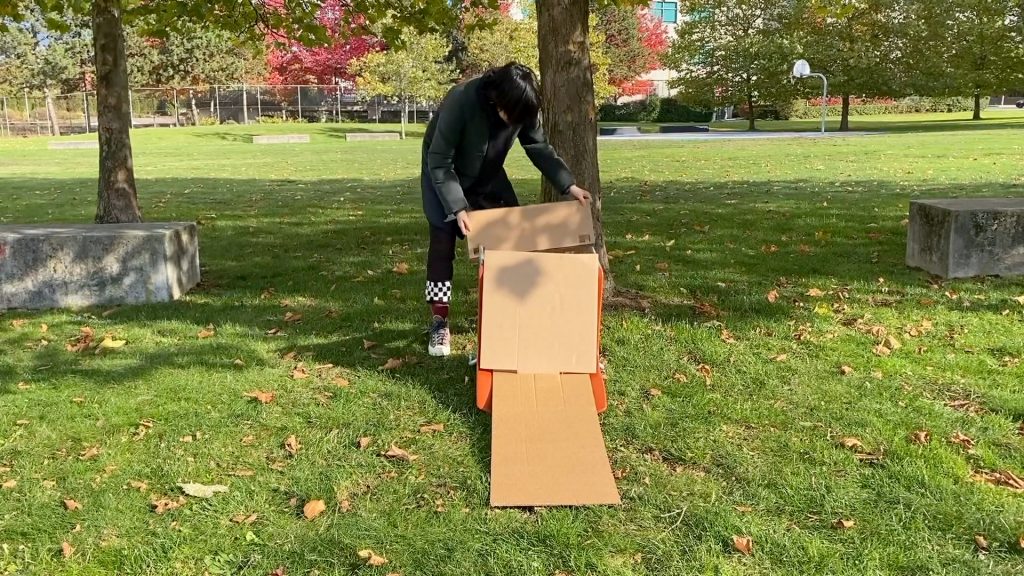
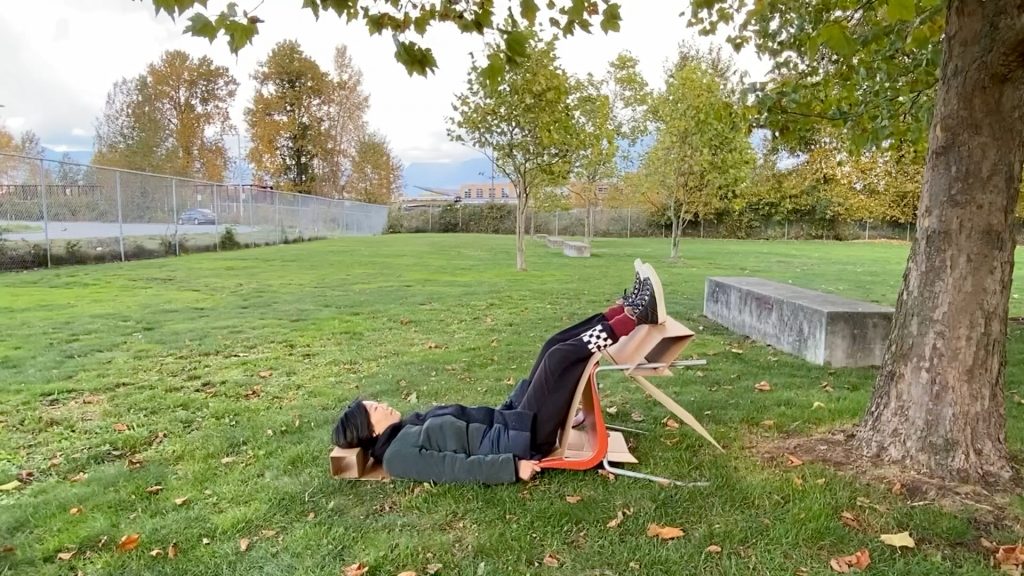
I thought, what if I made this chair to make myself and you look up the tree.
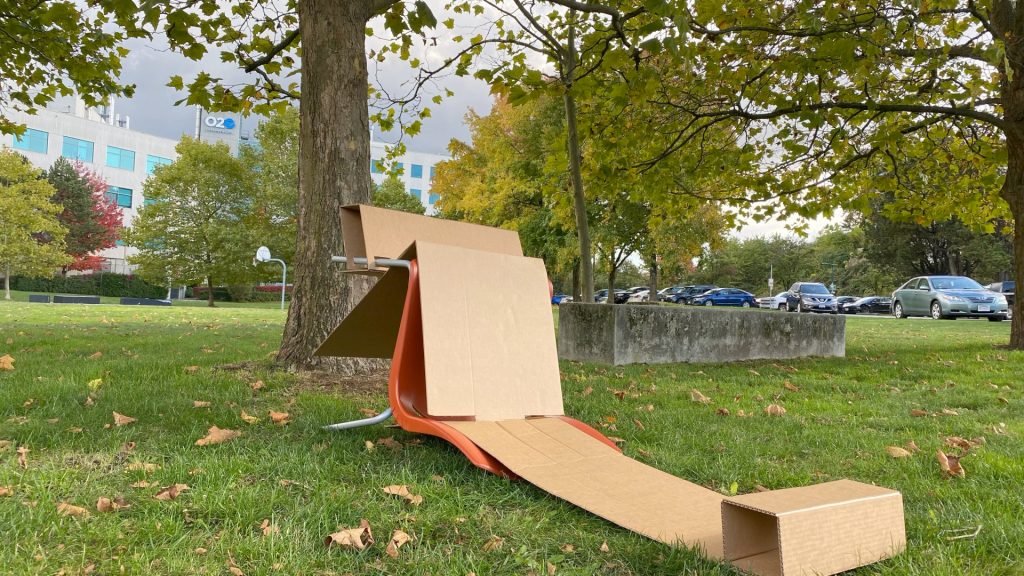
I wanted to suggest to people to transpose their perspective. I left my new chair in the park for a while to provoke some questions to people passed by.
Re-Phone
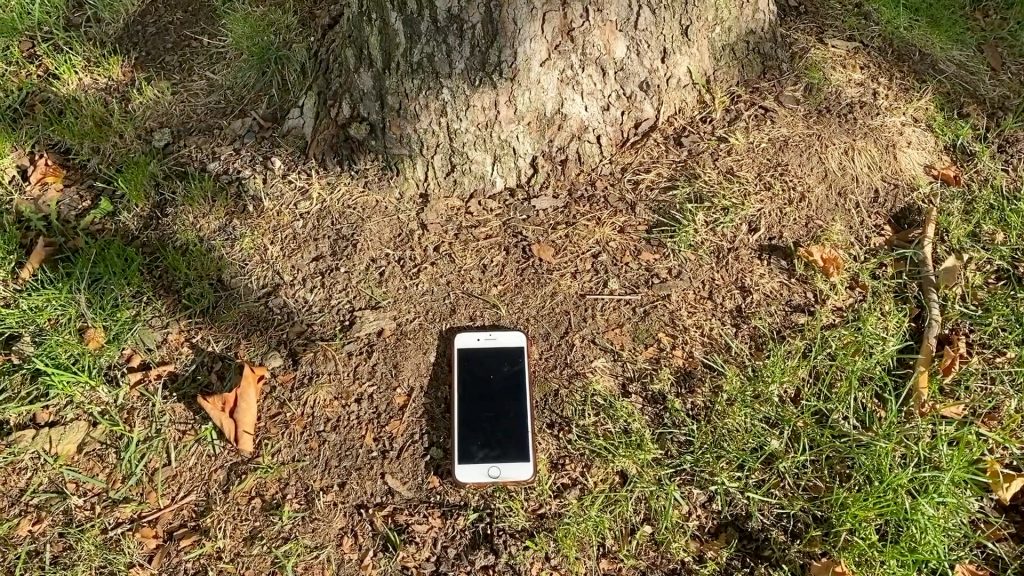
The transposing action through the chair triggered me more eager to communicate with the tree. I thought about how this phone of mine should be reformed in a way that allowed more actions for communication.
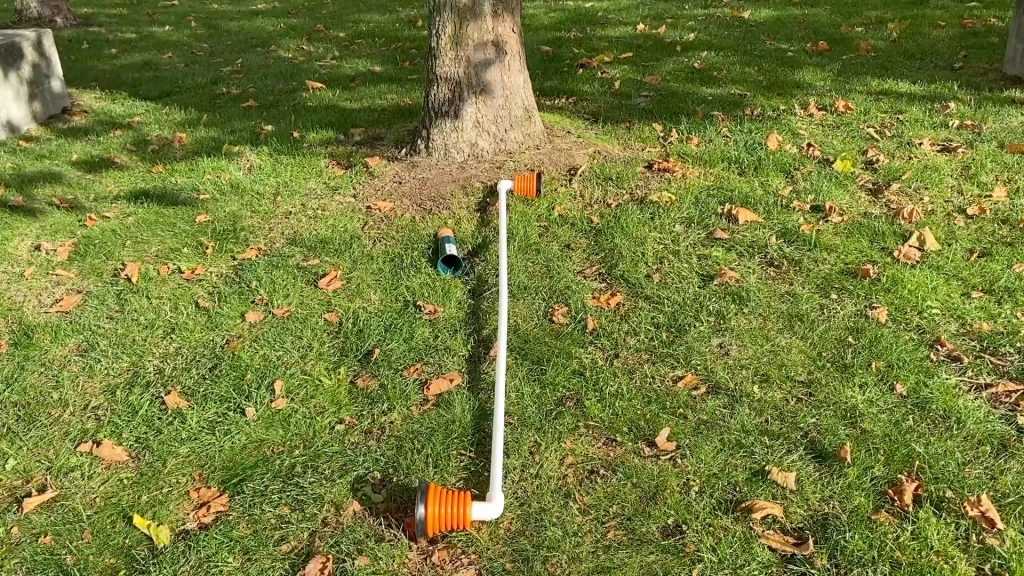
I made a long rod to hear the sound from the top of the tree, and a small barrel to hear the sound from the body.
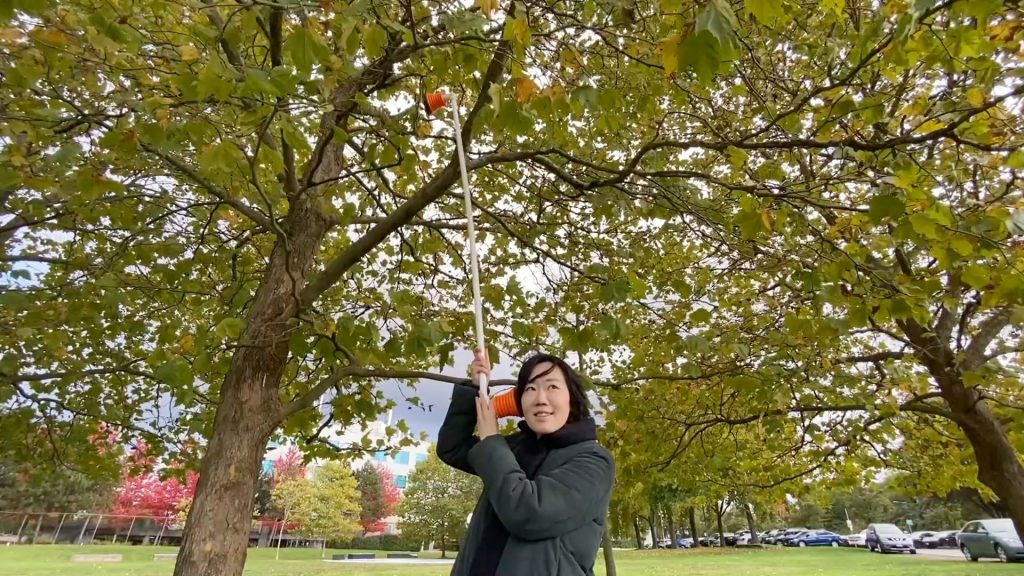
I raised the end of the rod high and placed it close to the head of the tree. I could hear the sound of the leaves moving, the wind, and the echoing sound from inside of the pipe. The sound was more dynamic than I thought.
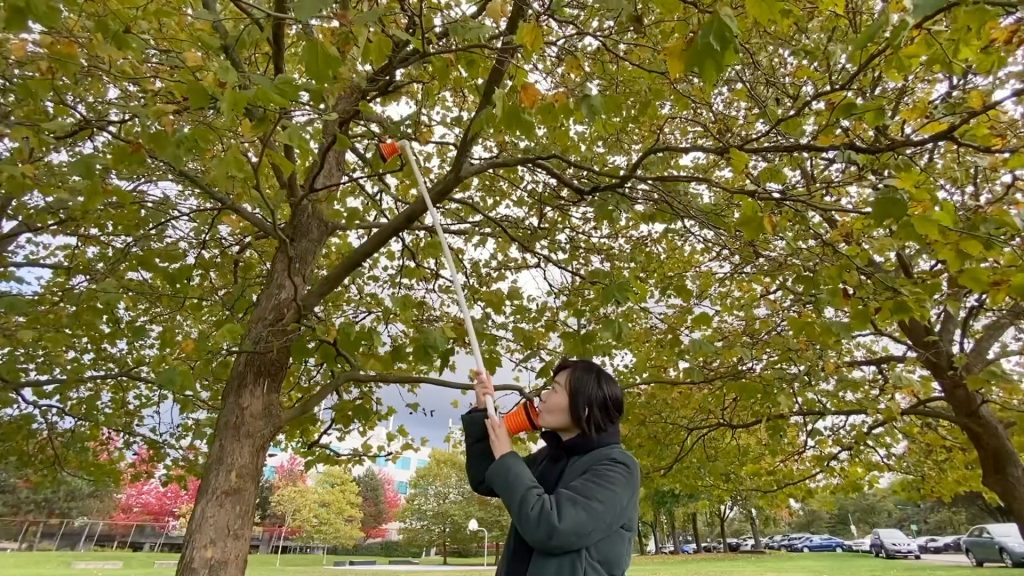
I tried to speak. “How are you?” But will the tree understand English? I wanted to respond to the tree with my own voice. I thought of the sound that expresses my feelings. “Ppabababa Ahbararaba!”
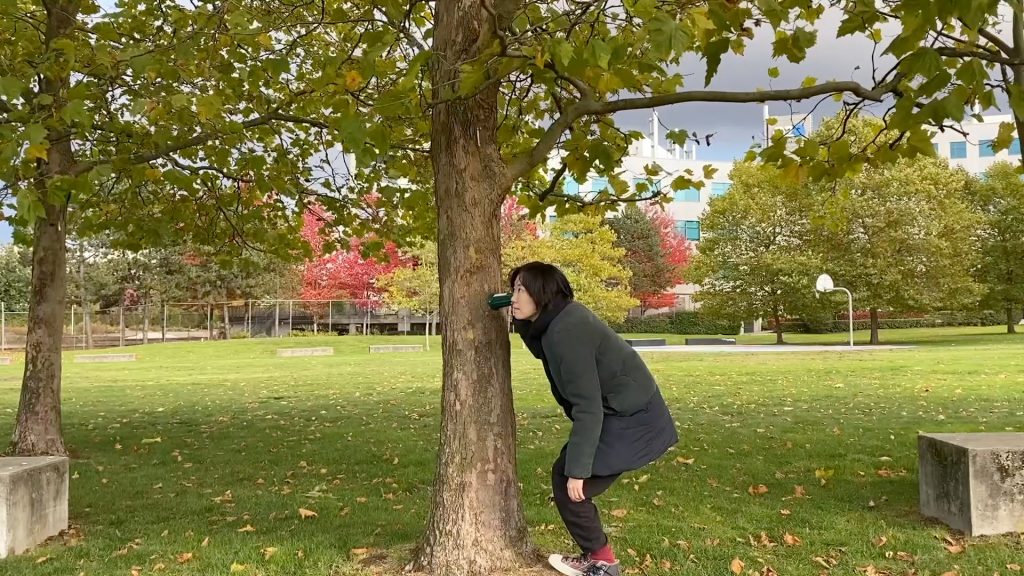
This time, I used a small barrel. Every time I moved my hand, it made a slightly different sound, and these sounds depended on the shape of the surface of the tree.

Also, this made me look at the bark and the textures of the tree in great detail.

This time, I decided to copy the sound from the tree. As if I was learning the sound of the tree. “Ohoooooo~ Ohoooowooo”
Re-Thermometer
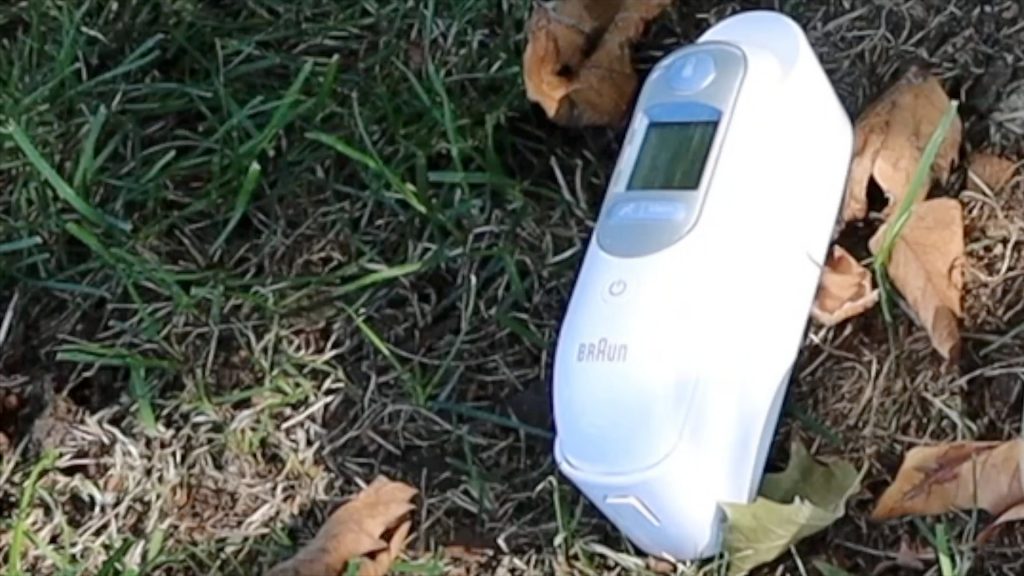
Rather than measuring the temperature, I thought that it would be better if a thermometer was an object that triggered the act of caring for the tree.
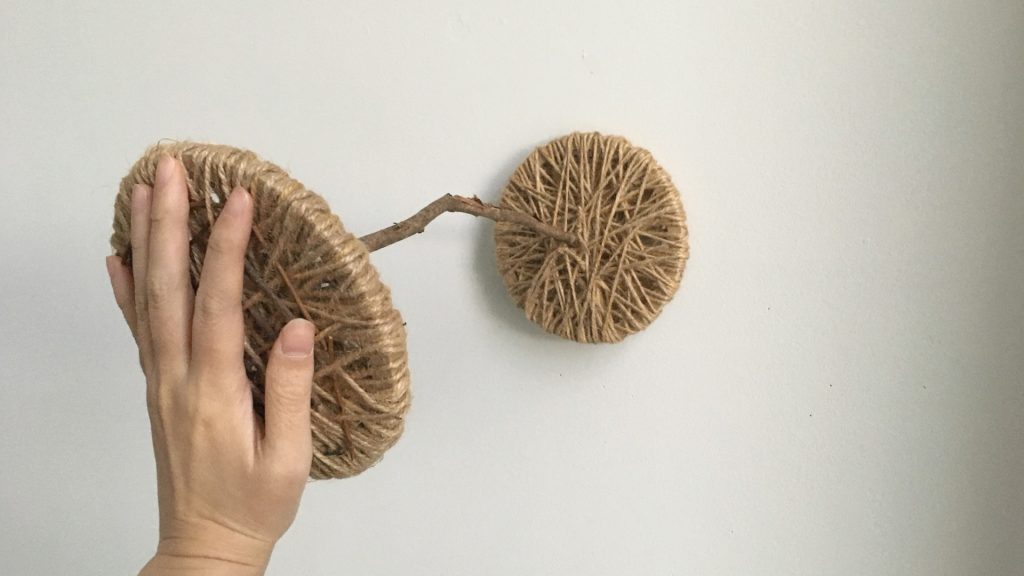
The body of the thermometer turned into a tree branch, and both ends of the thermometer transformed into a bunch of strings.
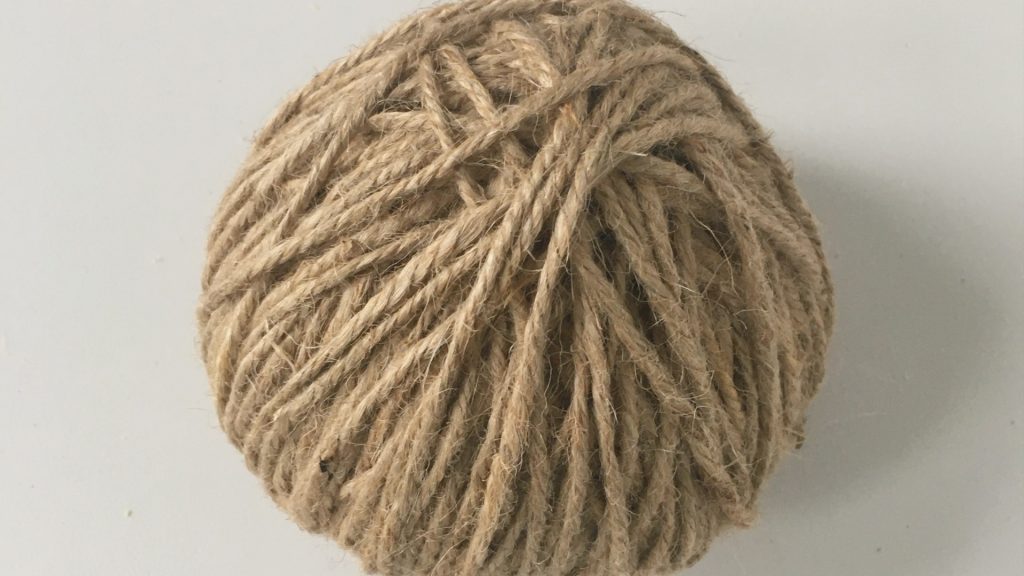

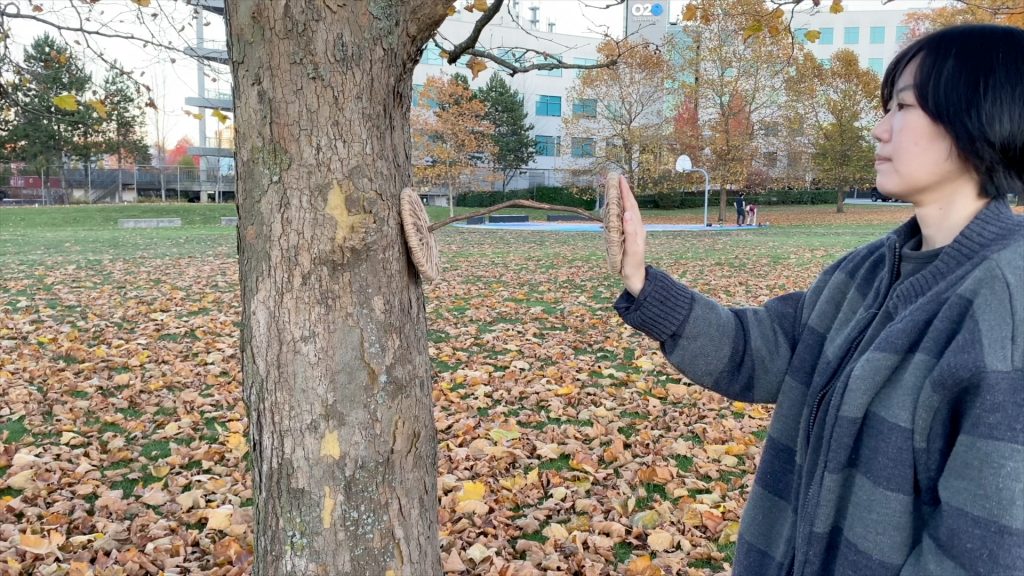
I tried to feel the tree. In fact, if I touched the tree directly with my hands, it could be easier to feel the tree. But still, on the other hand, I felt connected to the tree with this object.
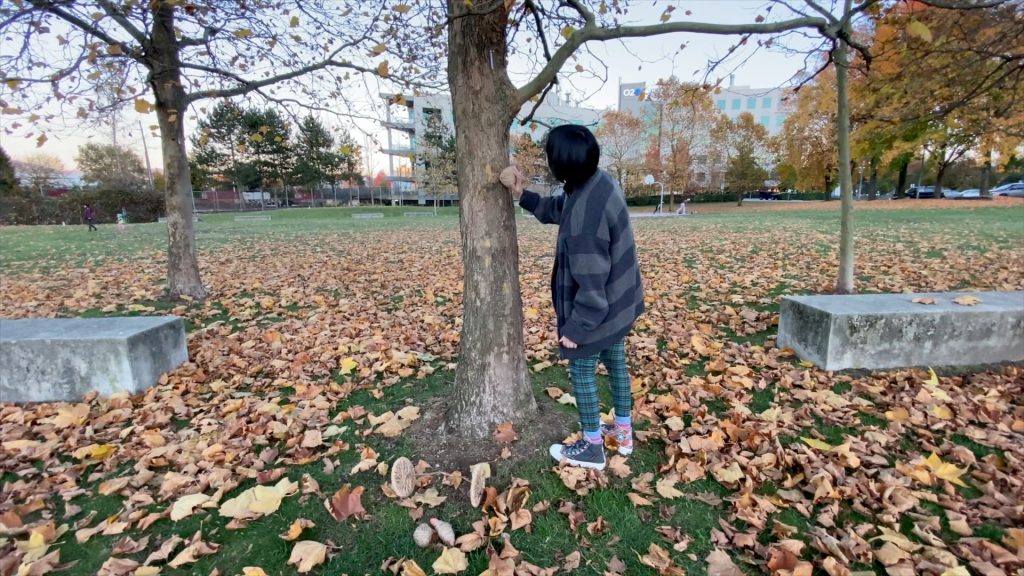
This feeling led my hand to massage the tree. I took out a small one and kept massaging actively by rubbing or rolling this object. I gave massages on parts where there was a lot of cracking and the colour turned black. After repeating these actions several times, I suddenly felt that I was in love with this tree and wanted it to be healthy for a long time. Did my massaging action make me feel this emotion?
Re-Book
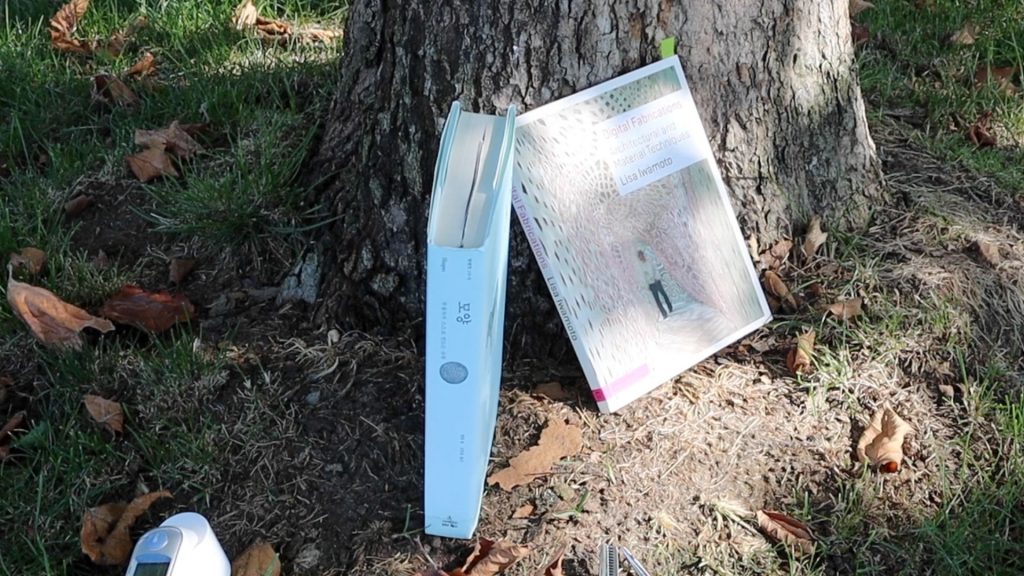
Trees could not have liked books written in human language. So, what would be a good story for the tree?
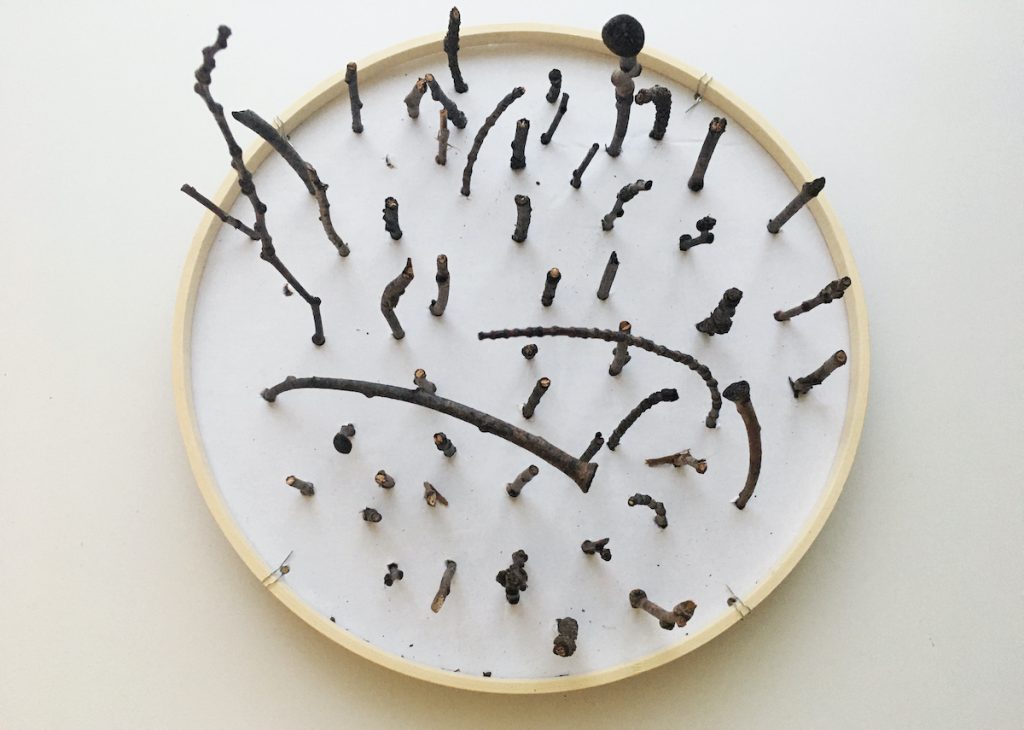
I gathered the fallen branches. “Isn’t each of these branches the story of a tree?”, “If I make a book of them, the tree would certainly like it more than a book made of text”.
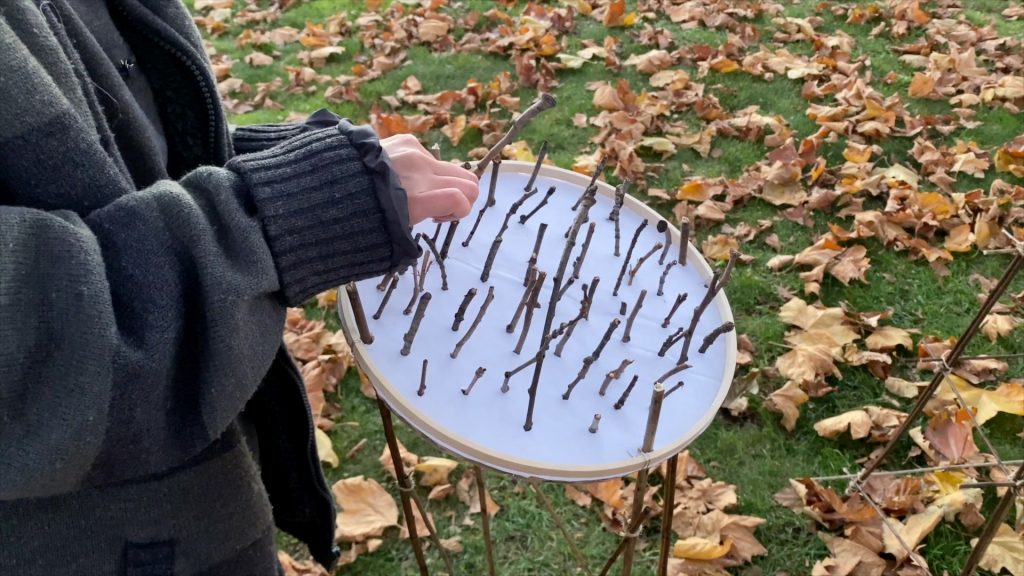
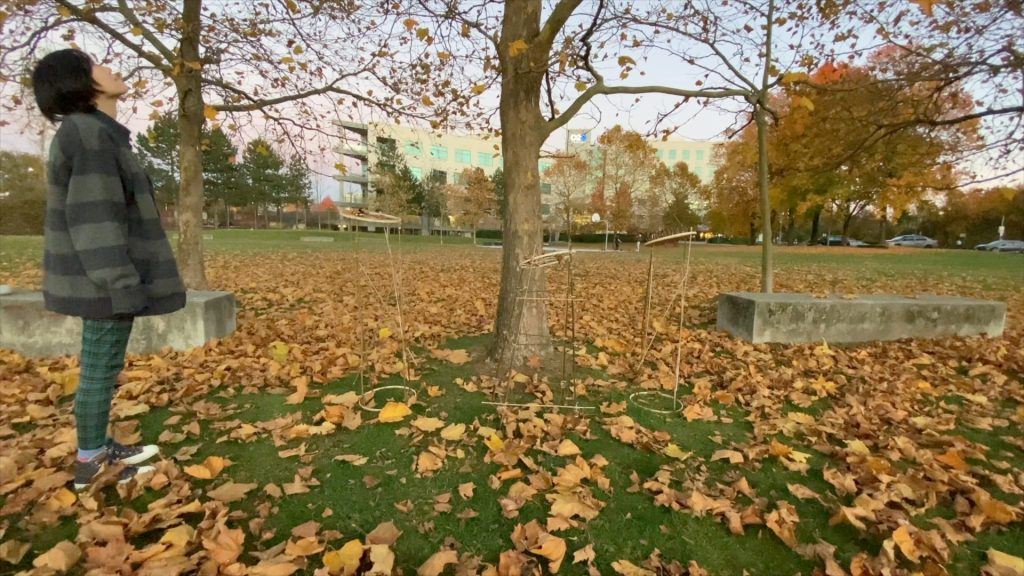
I went to the tree with three different versions of books that I made with branches. Is the tree reading the story of the branches of the tree well? I wondered what story they would be. I picked up these branches and leaves again and placed them on books. Have other stories been added? When I played with them, I tried to put images of the shapes, textures, and colours on my memory. I hope their stories will be growing in my mind too.
Re-Sketchpad
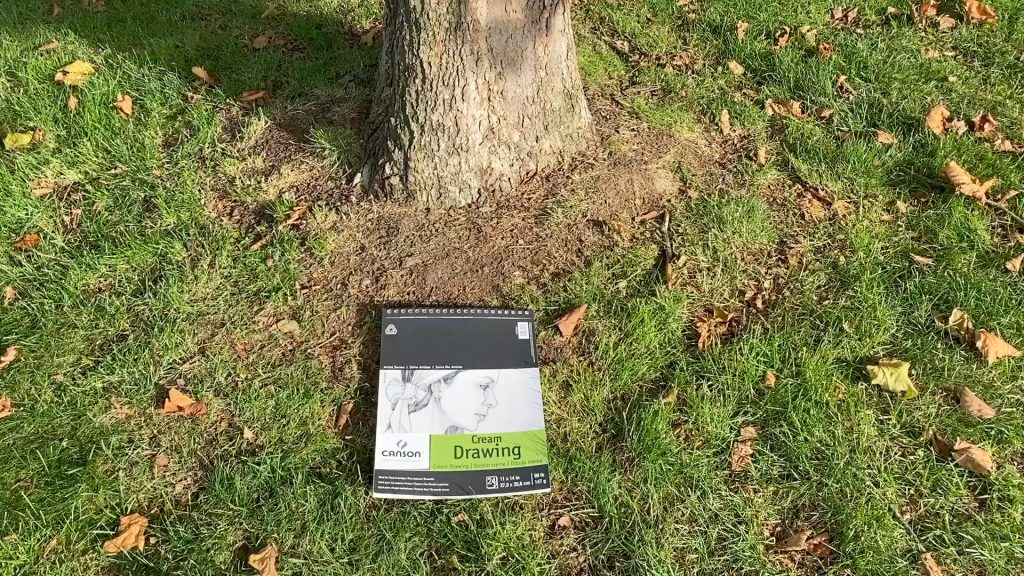
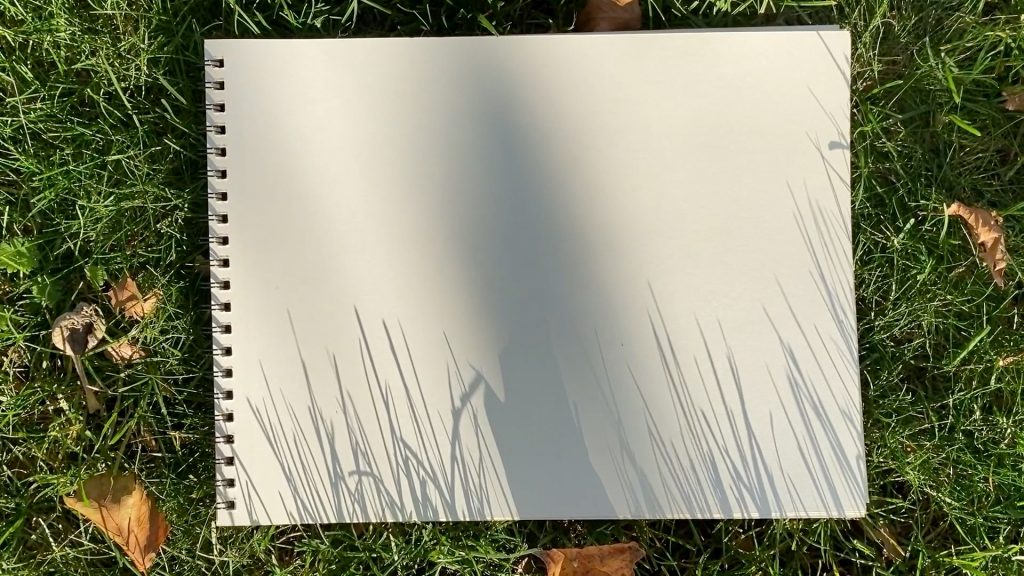
One day, I found the shadows of the leaves were moving onto my sketchpad. Leaves, grass, and branches moved beautifully in various forms. Maybe this is a real drawing from the Tree.
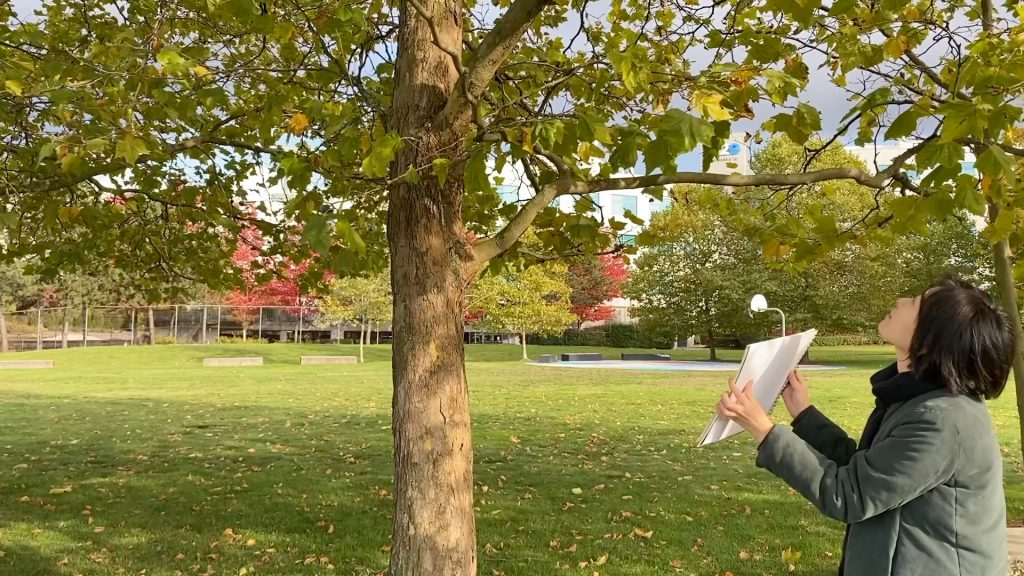
This time I wanted to respond to what the tree had drawn. I started drawing what I felt from their movement. I showed my drawing to the tree. “Tree! Do you like my drawing?”
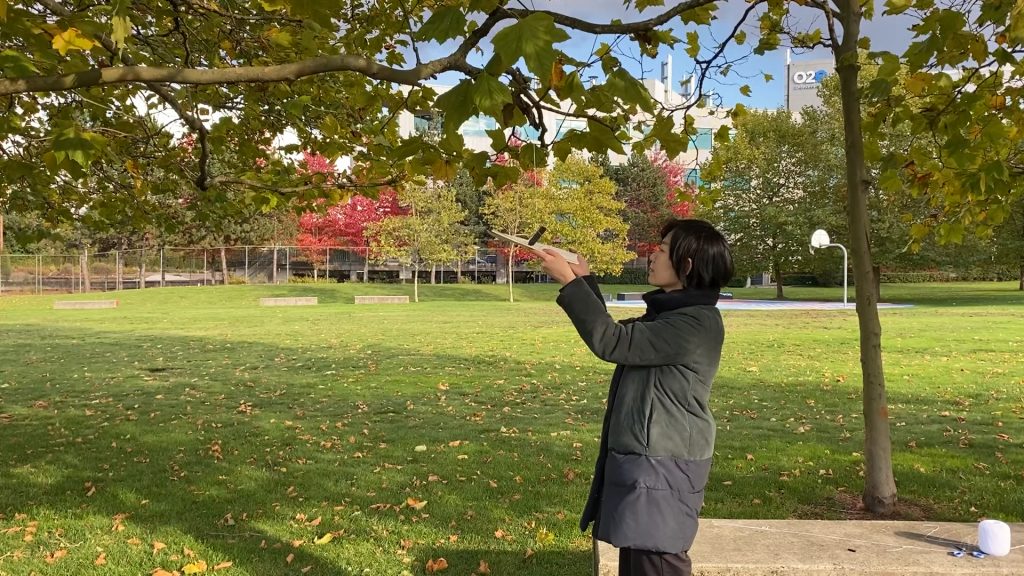
Then, I helped the tree to draw on my drawing. I hung the thread on the branch and tied the charcoal. The charcoal began to move slowly in response to the sound of the wind, and fine lines passed over my drawing through the paper.
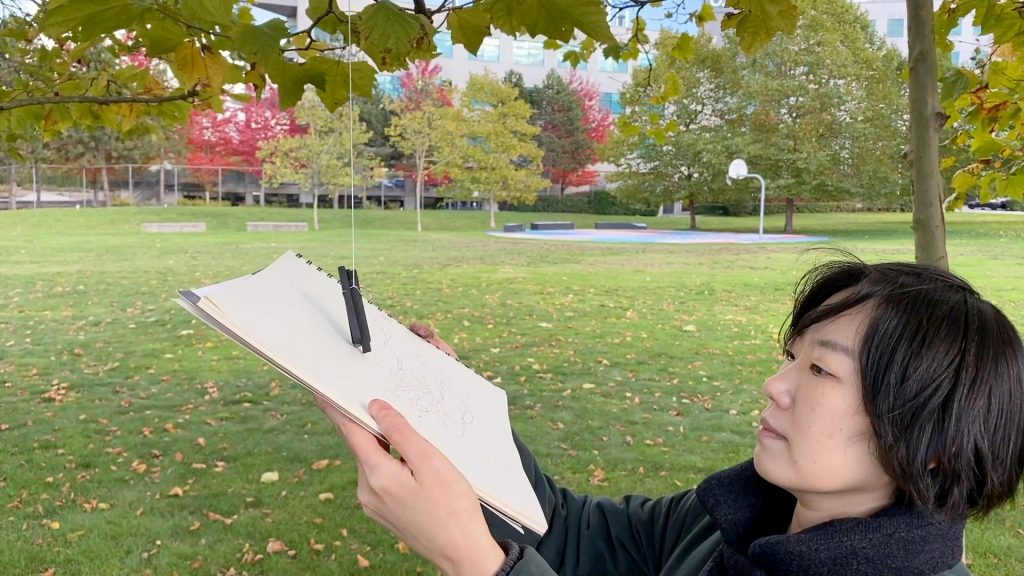
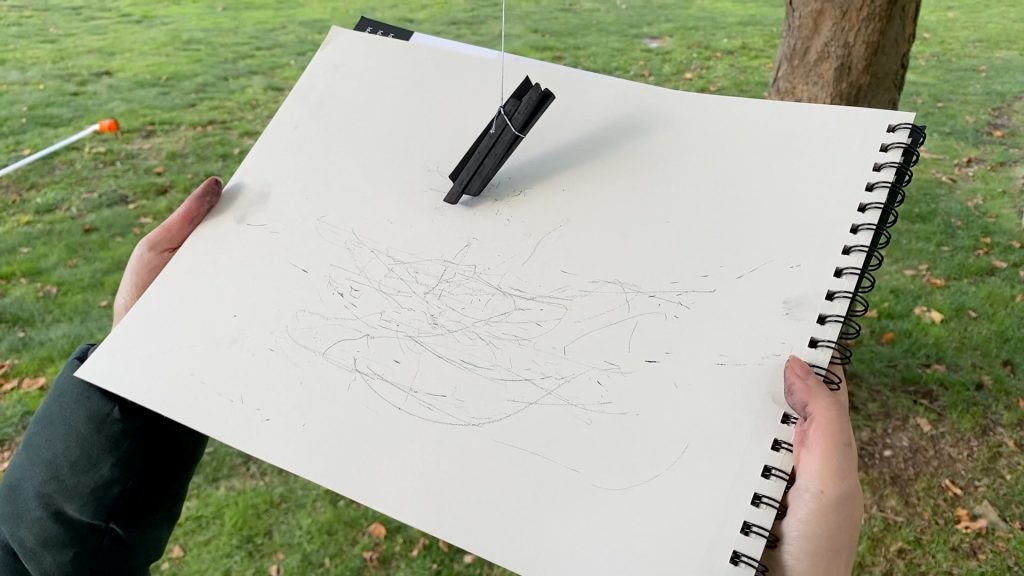
Seeing the moving lines, I was very impressed. The lines varied in thickness. Some lines were drawn with very weak trembling motion and some lines were drawn with the strong force.
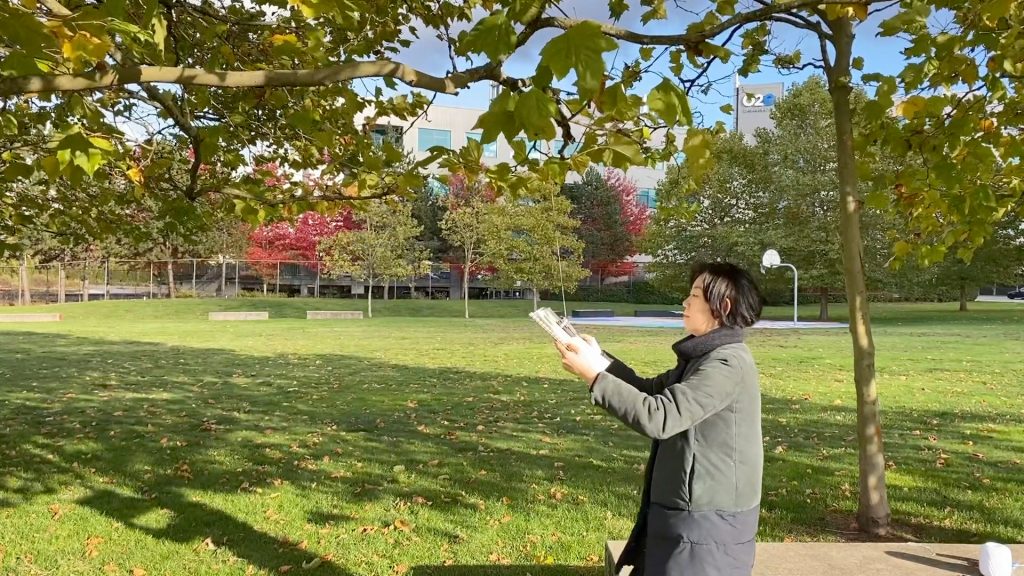
After trying a few more times, I learned that the drawing of the tree changes even in my movements. I gradually got into the rhythm. Finally, the tree and I felt like we were drawing together!
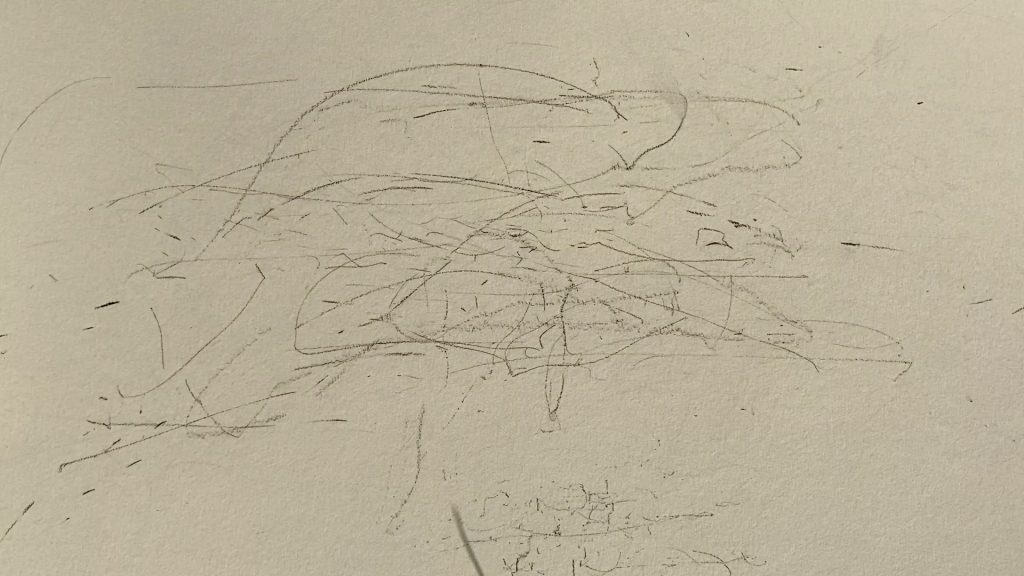
I realized that it is not so difficult to make myself be natural and interact with the nature! What I did was simply catch the moment of nature and myself.
06. Knowing
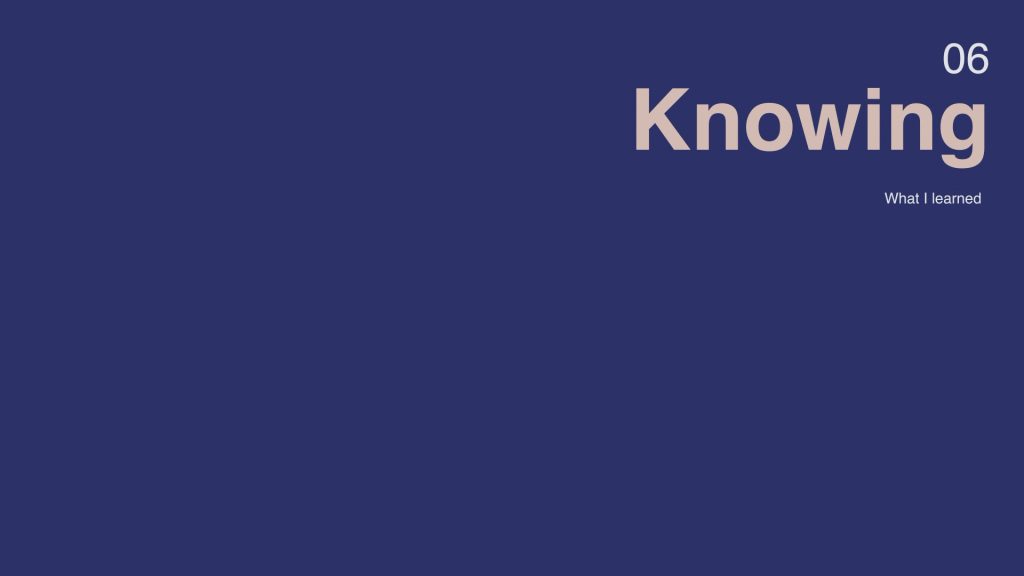
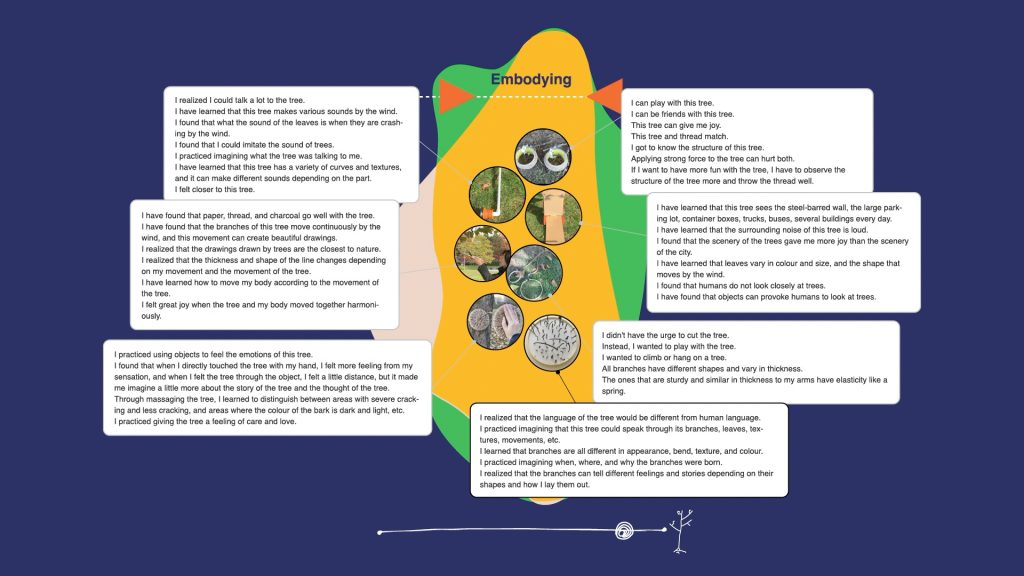
In the action Embodying, reforming objects triggered many actions, I learned and embodied many things about the tree and myself from this process.
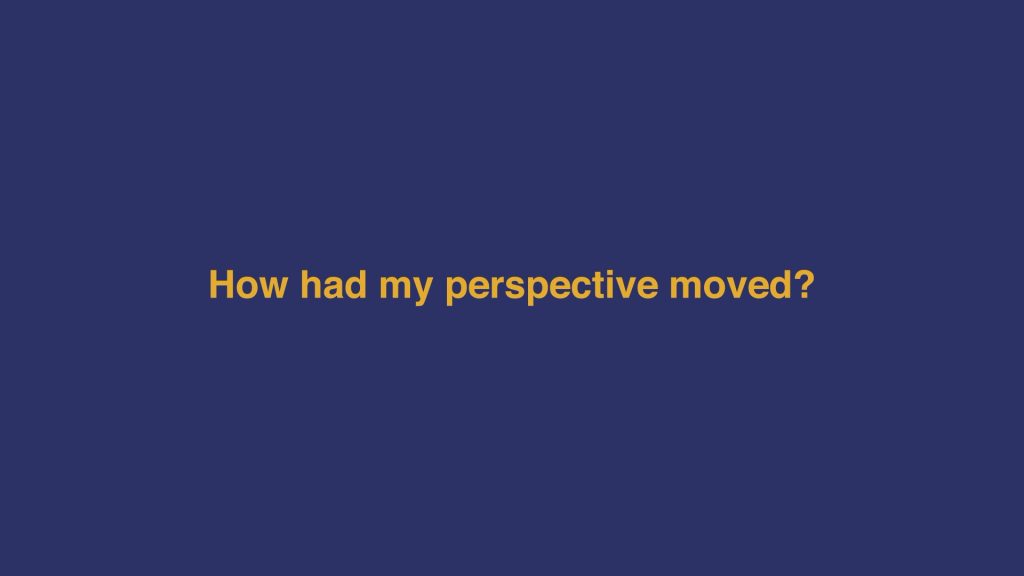
So, how had my perspective moved?
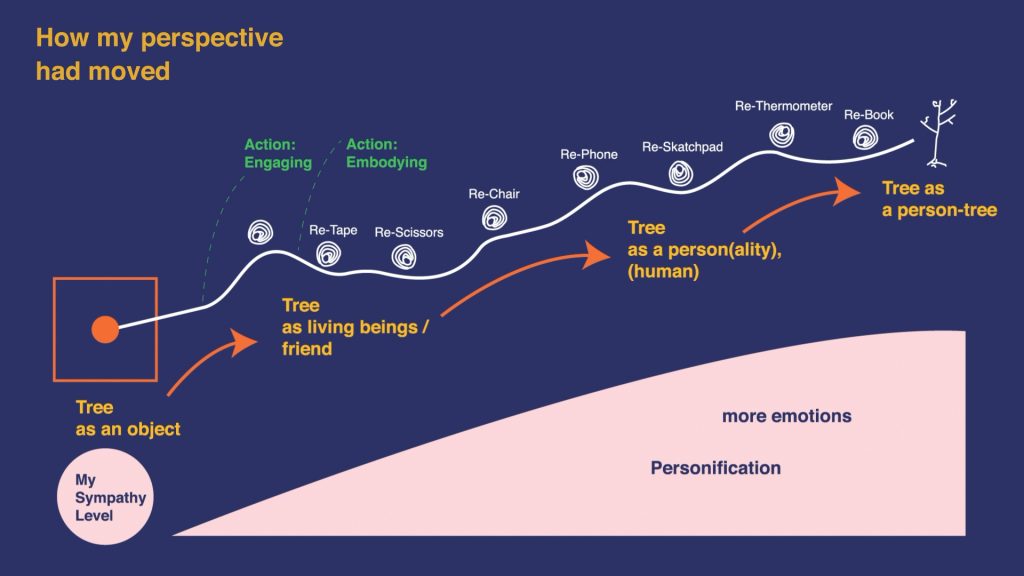
Before Action Engaging, The idea of doing something together with the tree seemed weird to me. I saw and understood the tree as an Object at that time.
After ‘reforming and learning’ with the tape, scissors, and chair in Action: Embodying, I started to connect my daily life to the tree. This gradually made me perceive the tree as a living being and my ‘friend’ who lives in my neighbourhood. Since the exploration of the phone, I had actively engaged with the tree and focused on actions that would allow me to interact with the tree as a person or personality who I wanted to get close to.
This act of personification led me sympathized with the tree strongly and triggered more emotions between the tree and myself. Eventually, I perceived the tree as a person-tree that were merged with two perspectives, one from myself and the other from the tree.
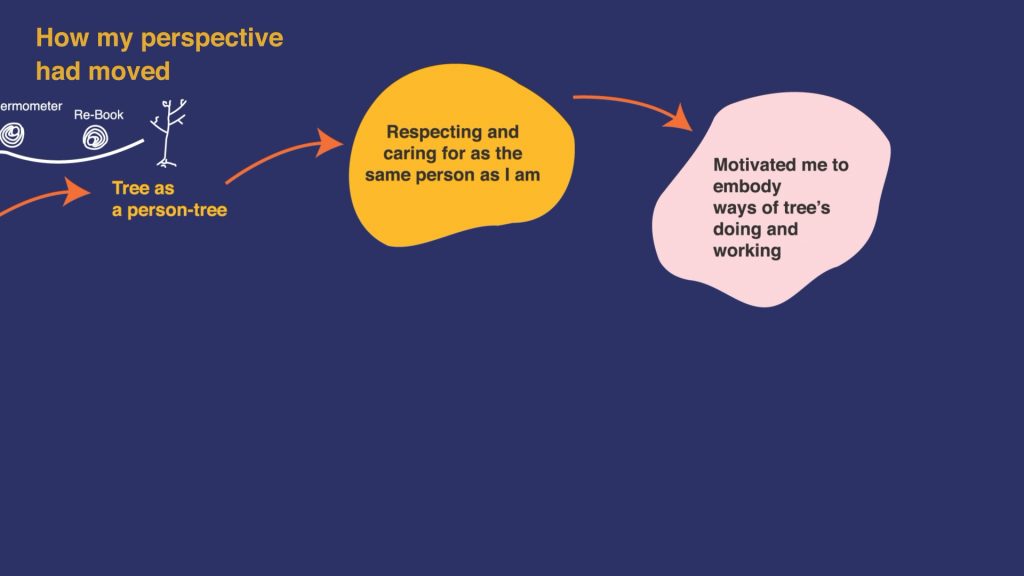
This perception triggered more feelings and actions of respecting and caring for the tree. On the other hand, it motivated me to embody the ways of tree’s doing and working.
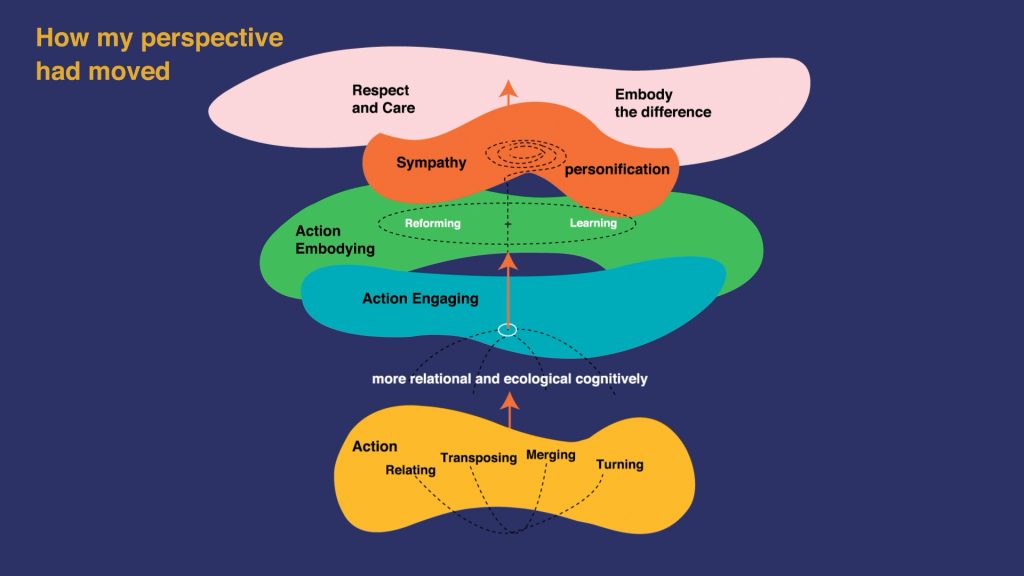
All my actions of explorations played an important role to shift my perspective. Through action: relating, transposing, merging, and turning, my perspective had become more relational, ecological, and pluriversal. And action: engaging, embodying, reforming objects for the tree, and personification triggered more sympathy to the tree. Eventually, my perspective motivated me to respect and care for nature also embody the difference from humans.

Through the whole process of my explorations, I have learned that ‘perspective’, ‘action’, ‘emotion/sympathy’, and ‘design’ are closely connected to one another. They influenced each other in various ways as you can see from my diagrams. In this way, each of them worked as a motivator to each other and helped me to pay attention to the tree or nature consistently.
08. Becoming
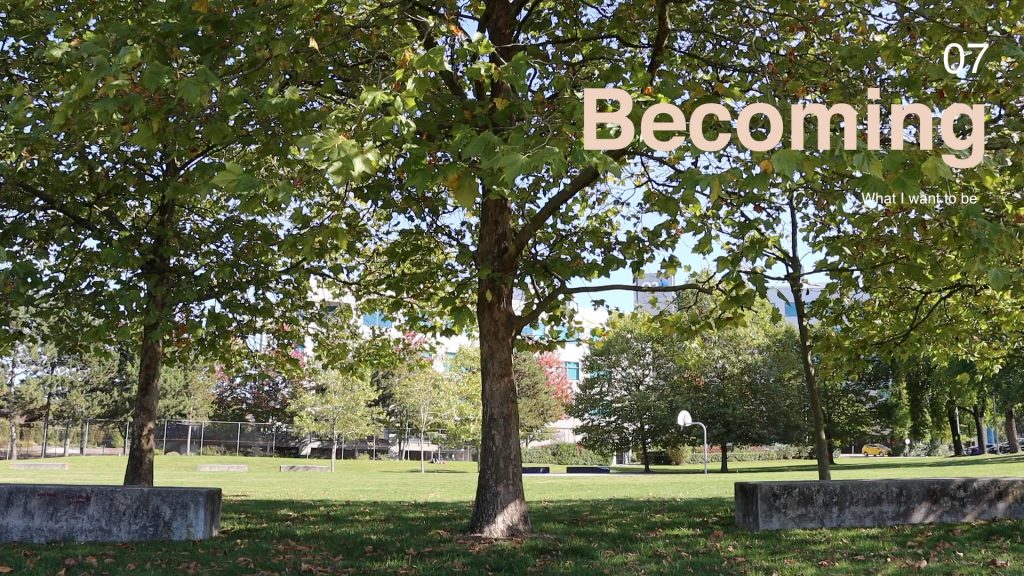
Fortunately, during two years of my master’s studies, the efforts to stop Five-year-old-Jihyun’s crying seem to have been worthwhile. I feel close to her now. Now, she has become Jihyun-tree. Instead of her crying, she wants to tell the story of her making.

“Hi. I am Jihyun-Tree. There are things I wanted to make for you. I want to convey what I have learned from the Tree through making. I want to relate to you by sharing what I know. The structures I have seen through the Tree have no distinction between inside and outside. And these are always growing. But it just doesn’t grow up thoughtlessly. It is always stretching out to create new relationships and to create balance and harmony. In order to keep these ways, I make intuitively, following my hand’s moves. This is very different from Present-Jihyun’s way. She used to think of meaning, purpose, appearance, and structure while making. But I follow the structure that is being made according to the properties of the material. And finally, in this structure, I ended up containing the feelings, impressions, relationships, sympathy, growing patterns, and the soul of the Tree that I learned during my time with her. I want to call this ‘Knowledge’ – the thing that has been created between the tree and me.”
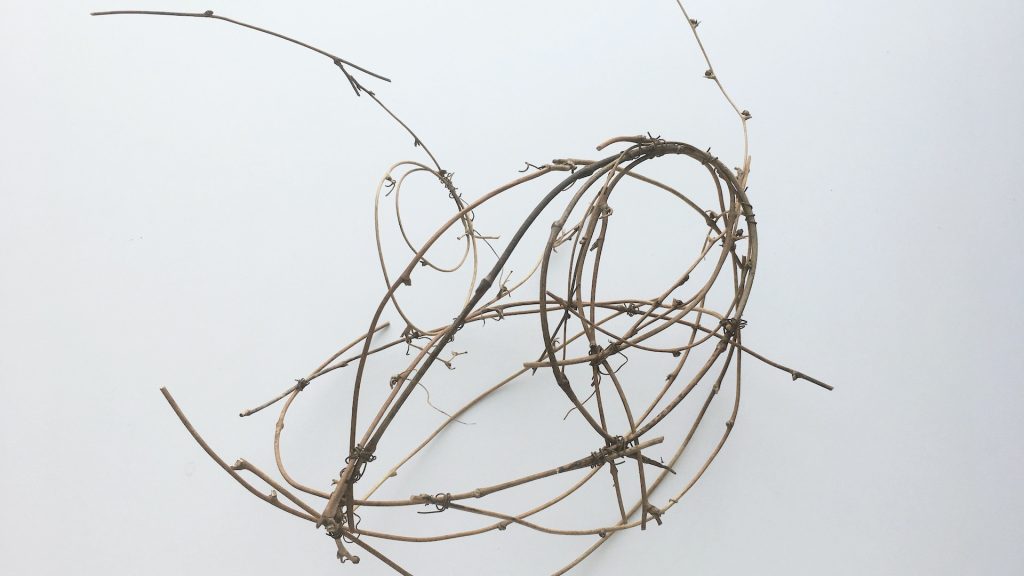

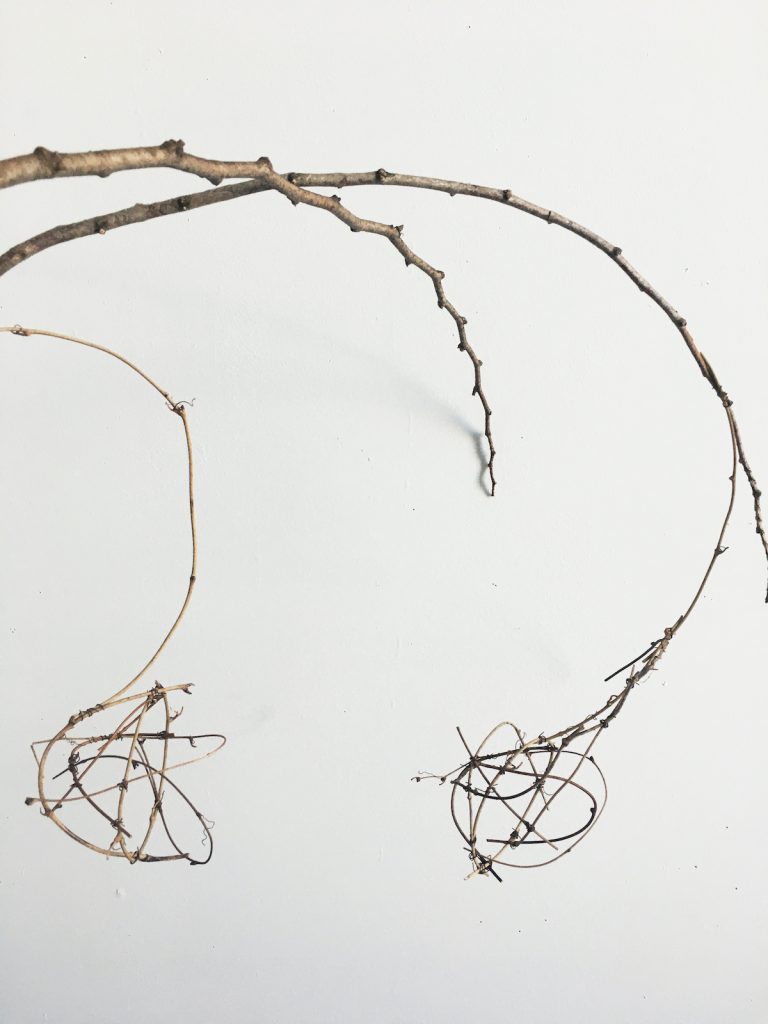
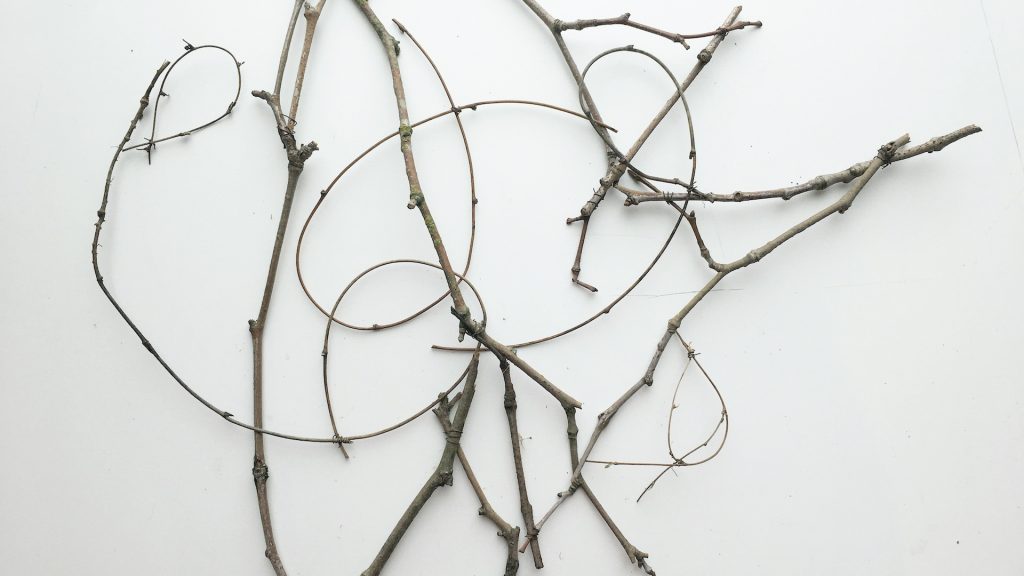
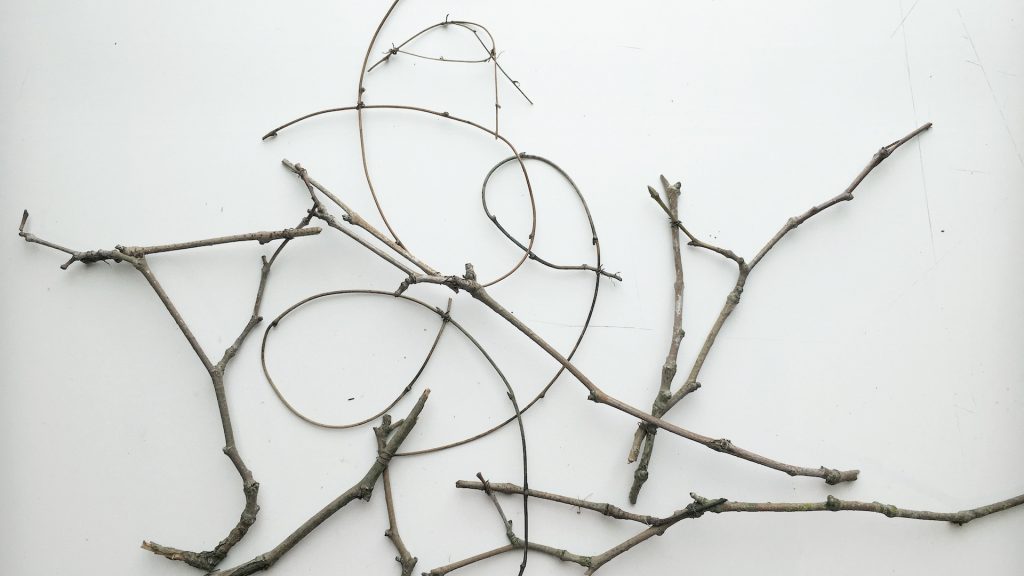
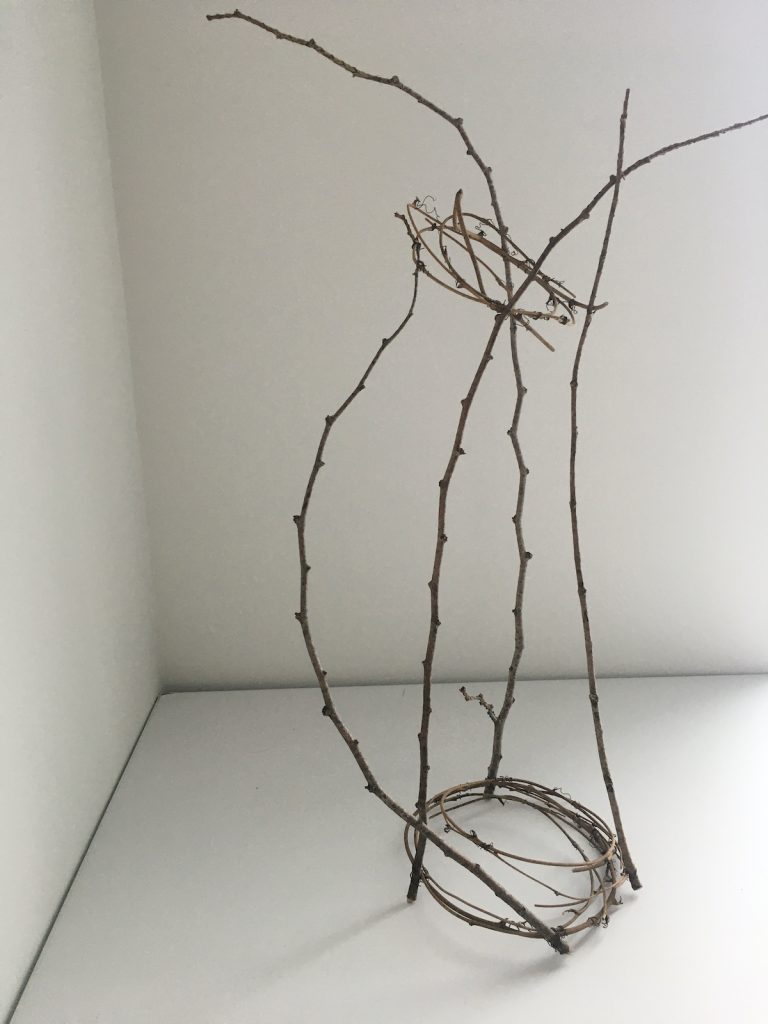

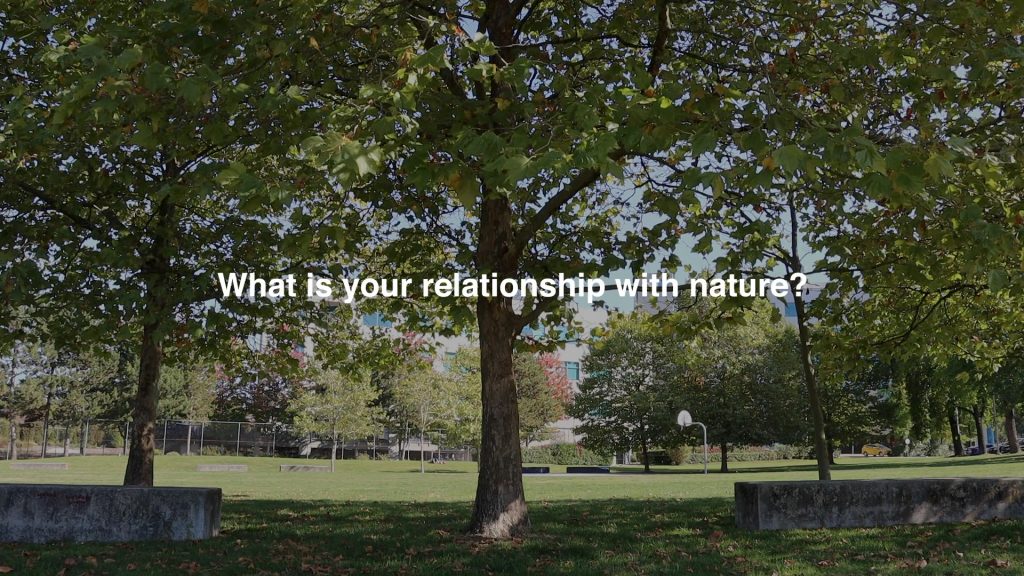
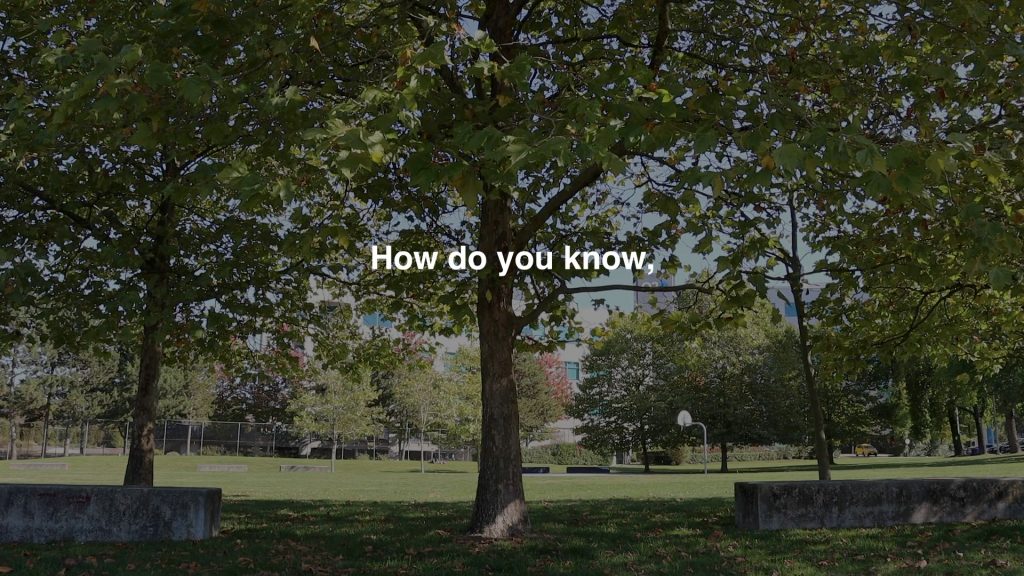
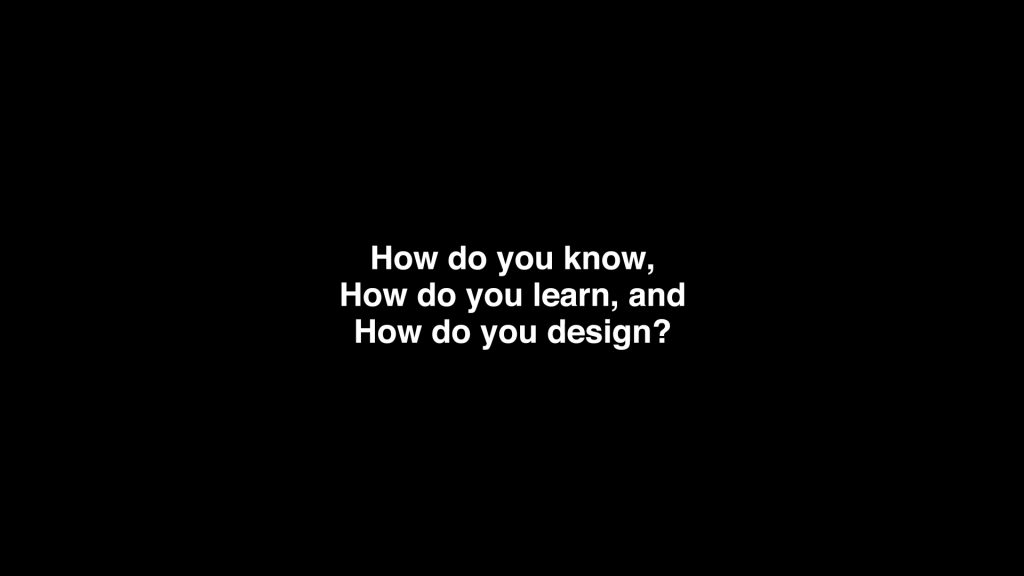
Full story at my thesis [Download]
More resources from my [research website]
Summary of re-formed objects
Re-Tape and Scissors

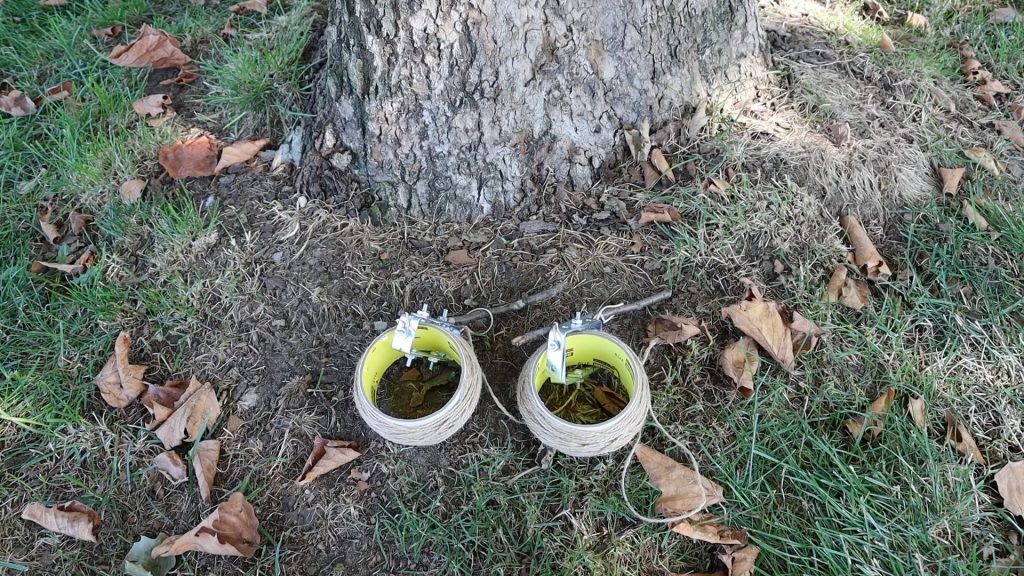
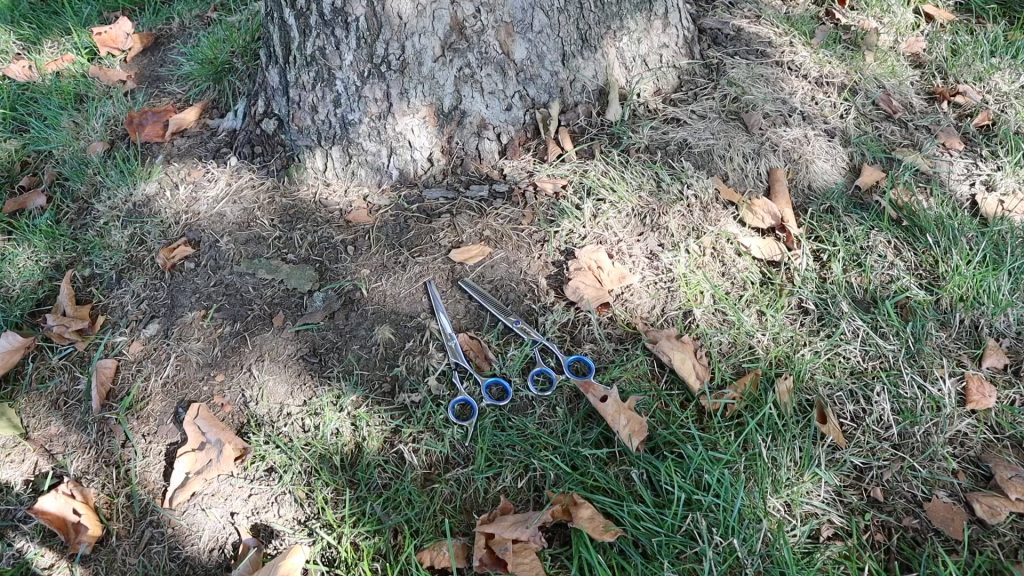
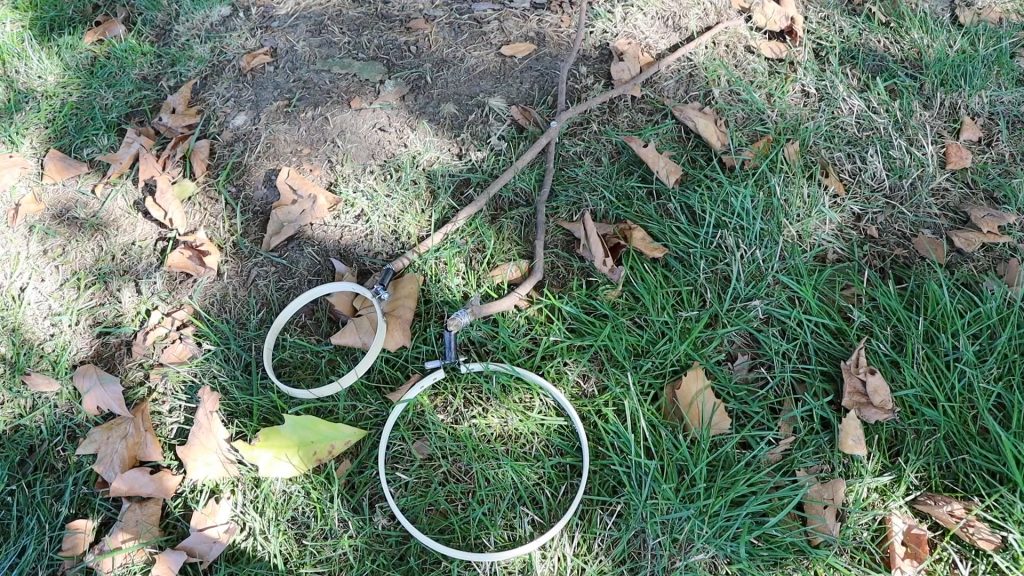
Re-Chair
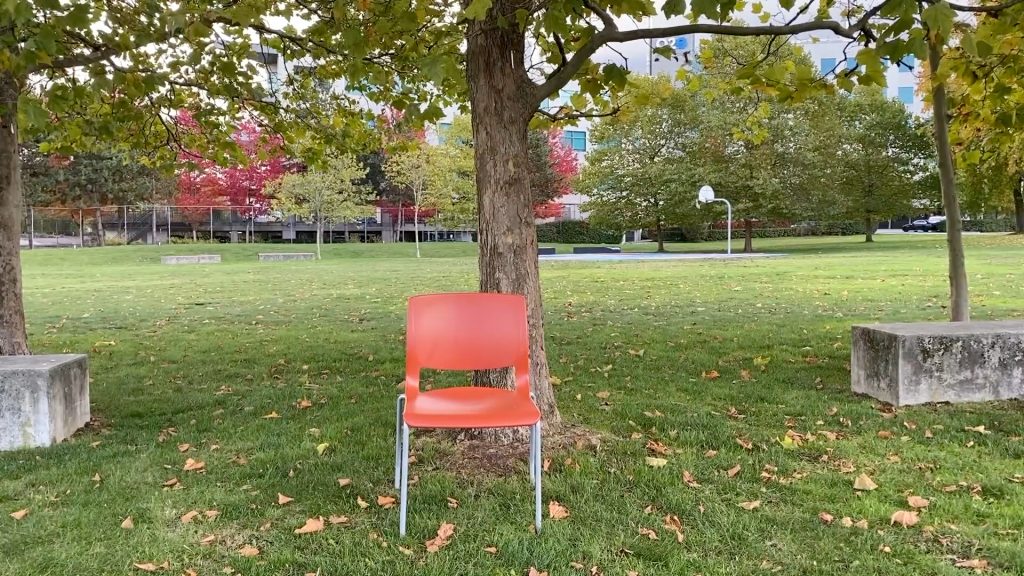
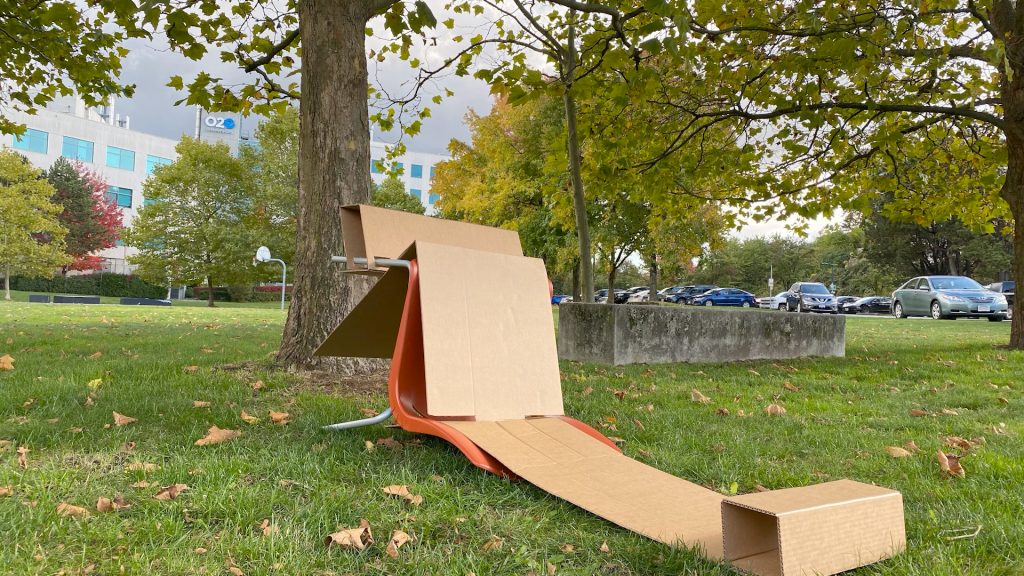
Re-Phone
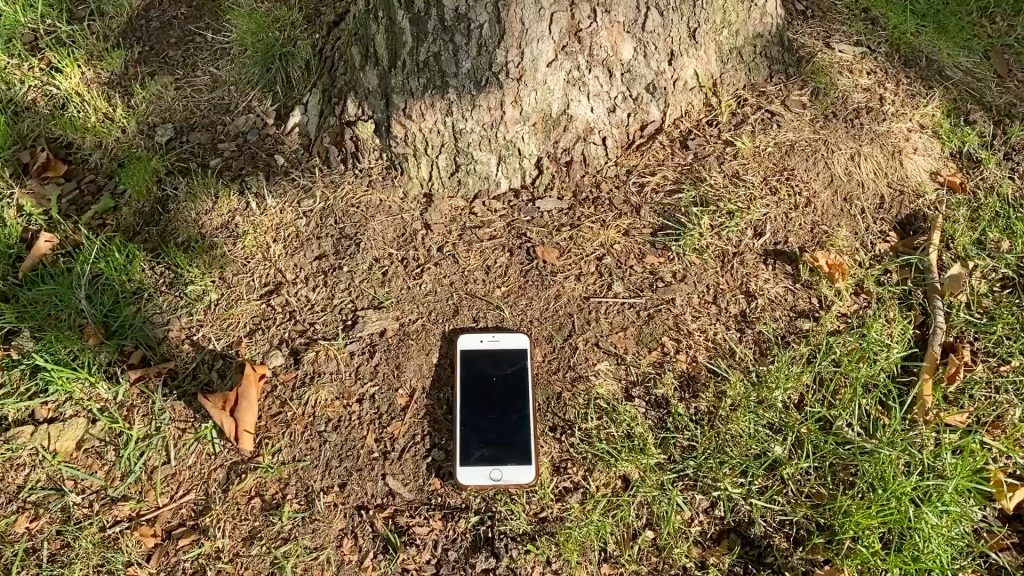
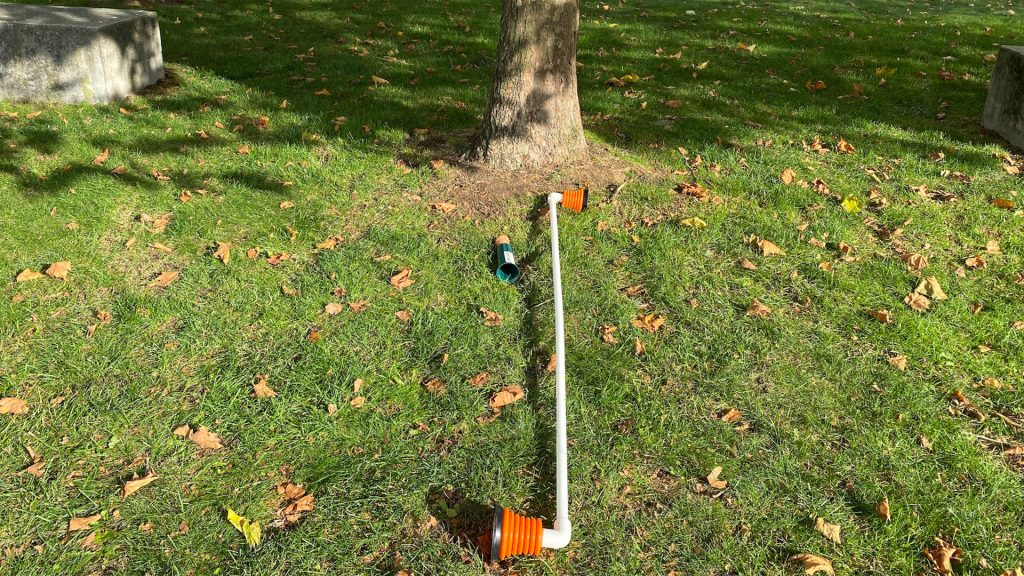
Re-Thermometer
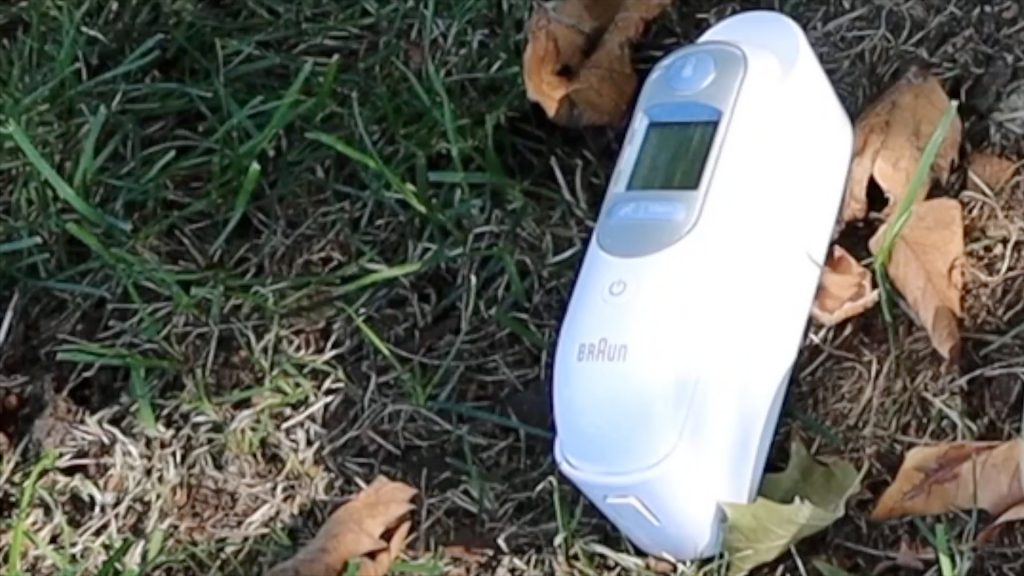
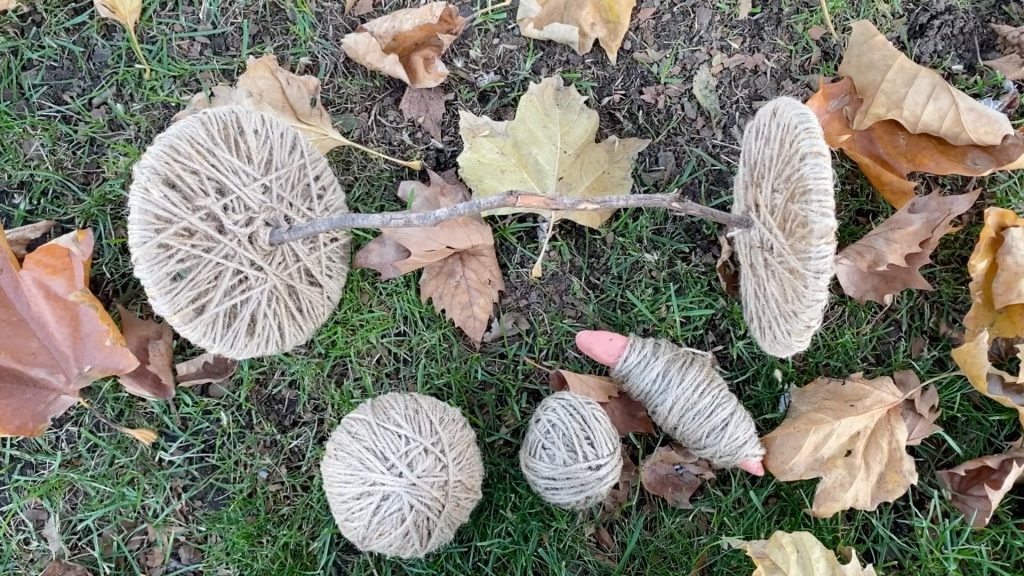
Re-Book

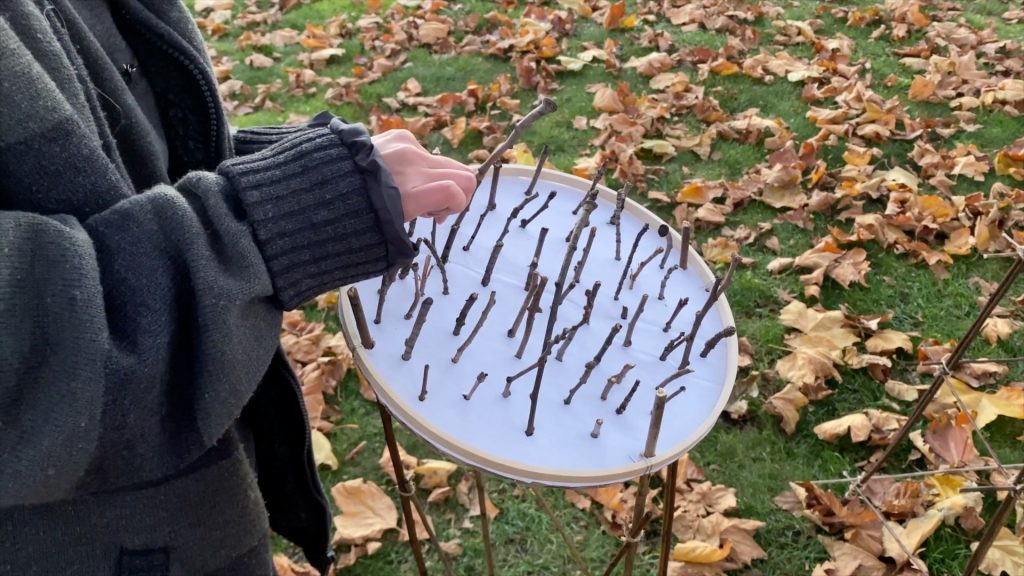
Re-Sketchpad
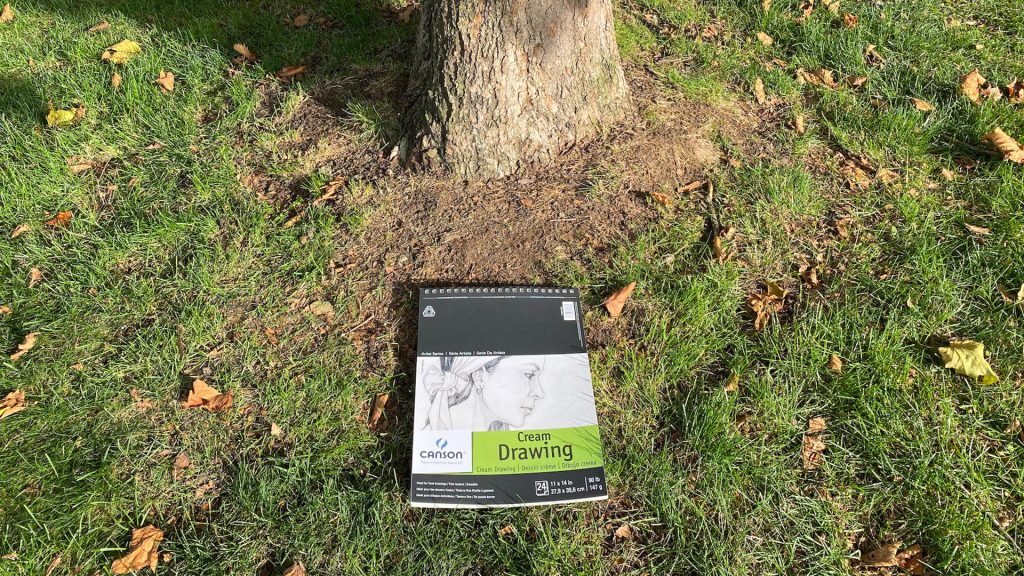
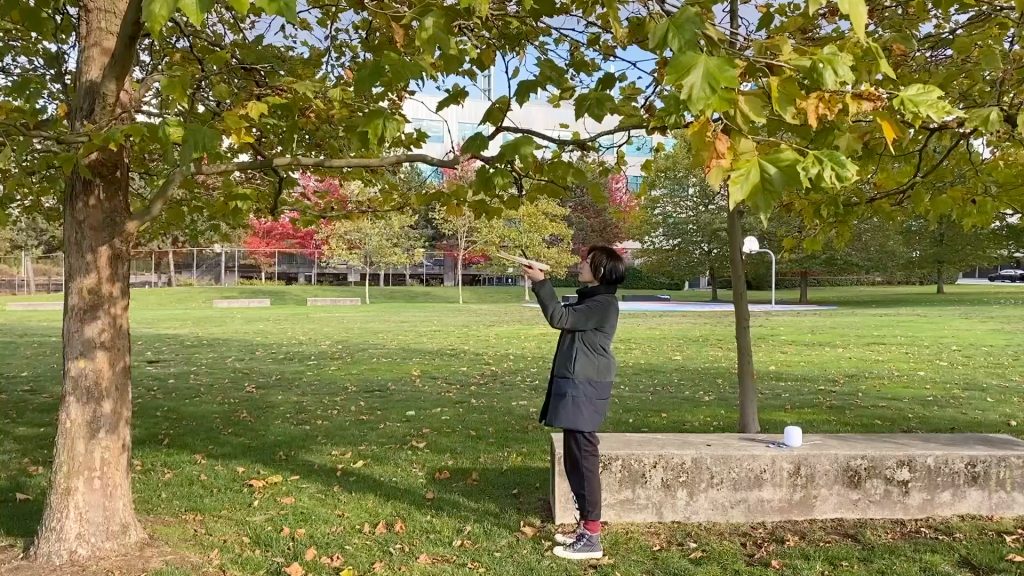
The interview about my research:
